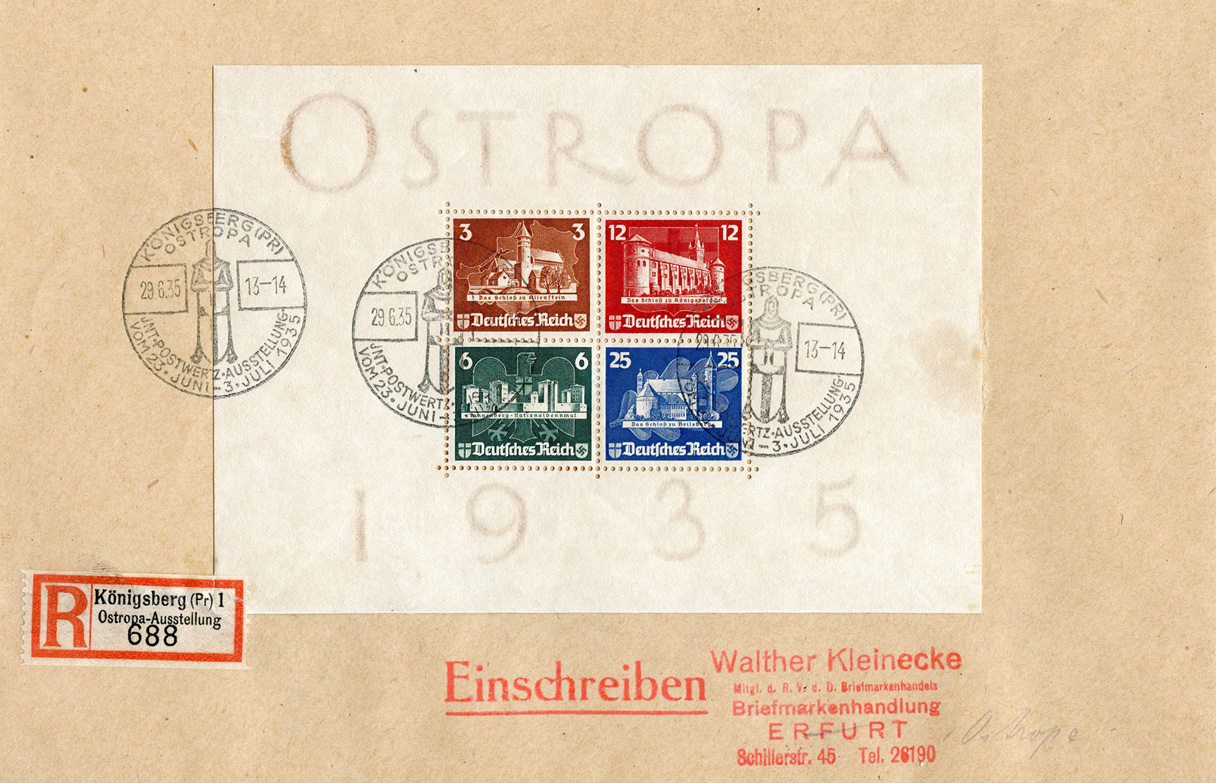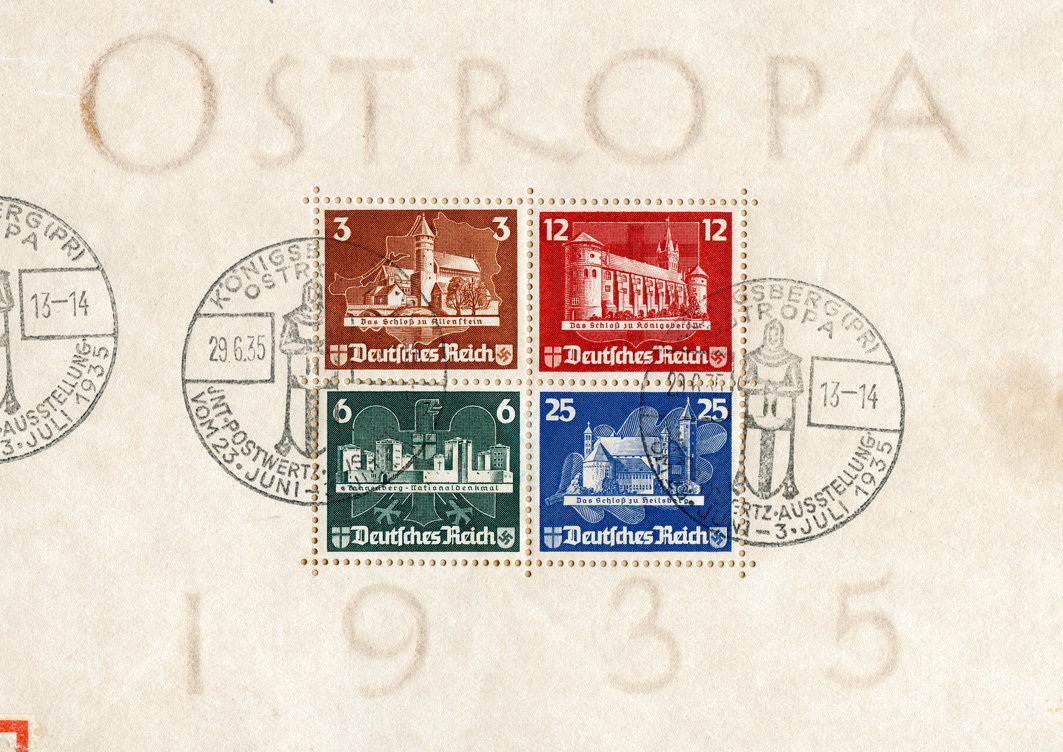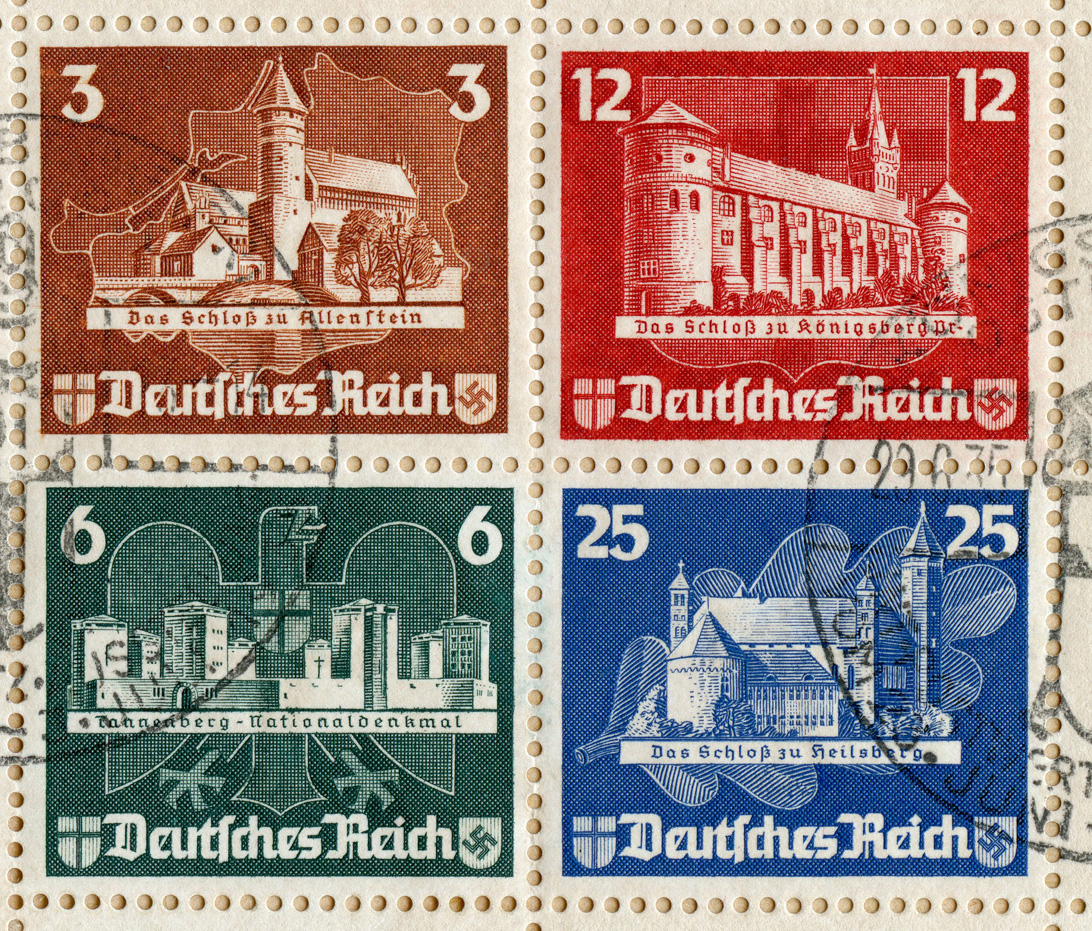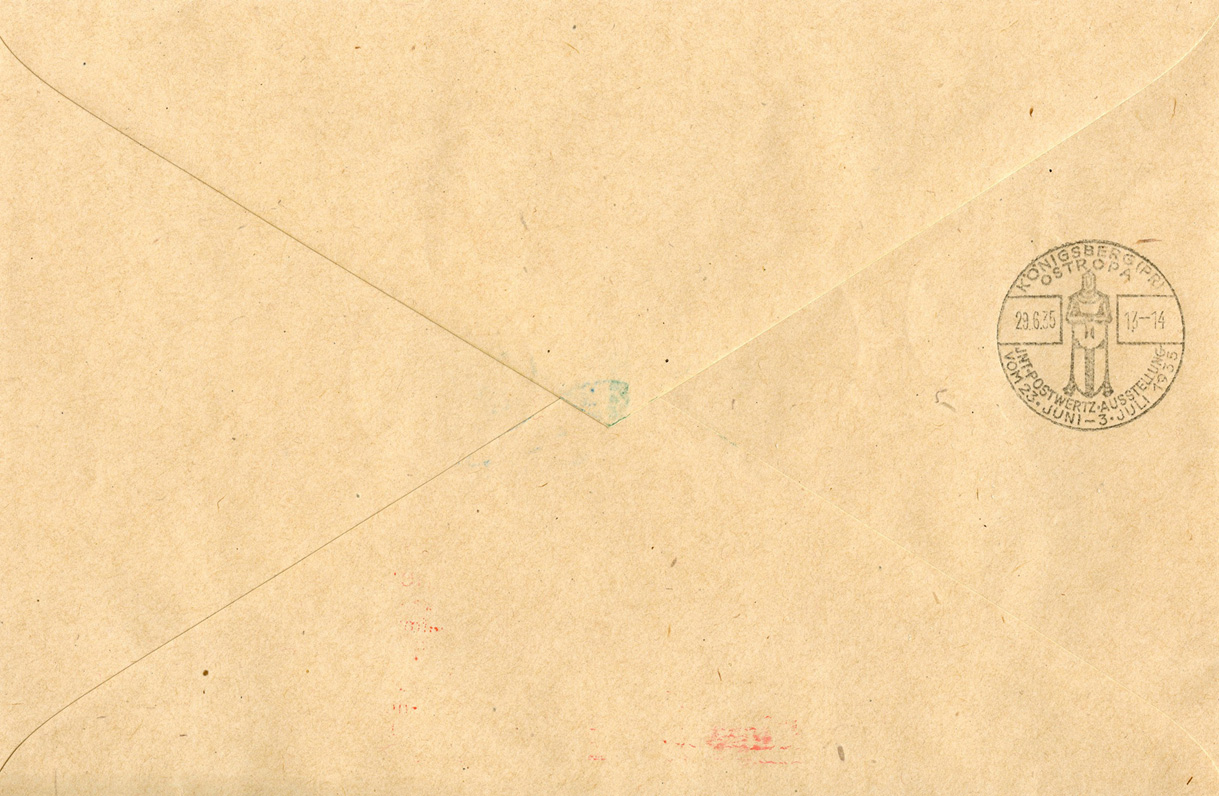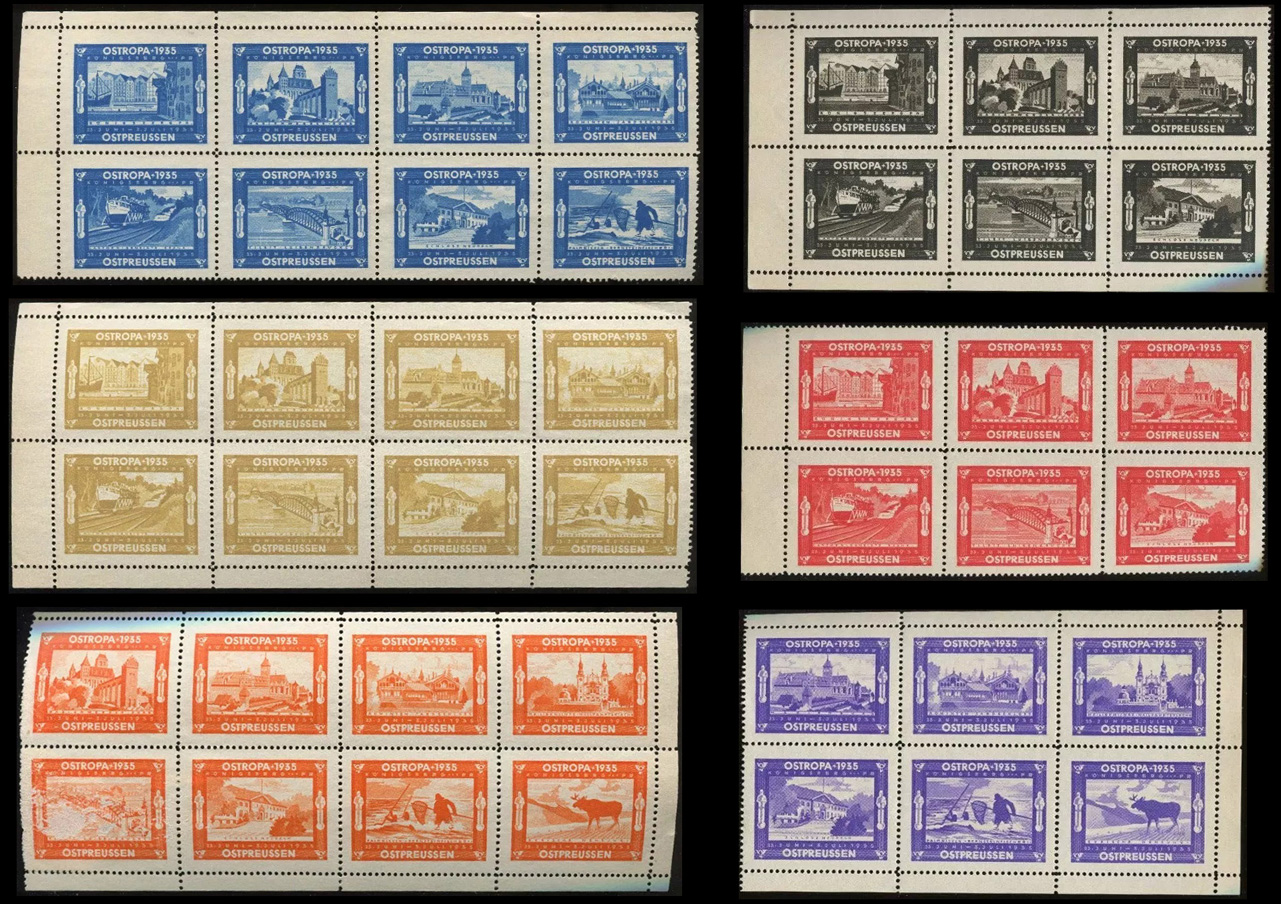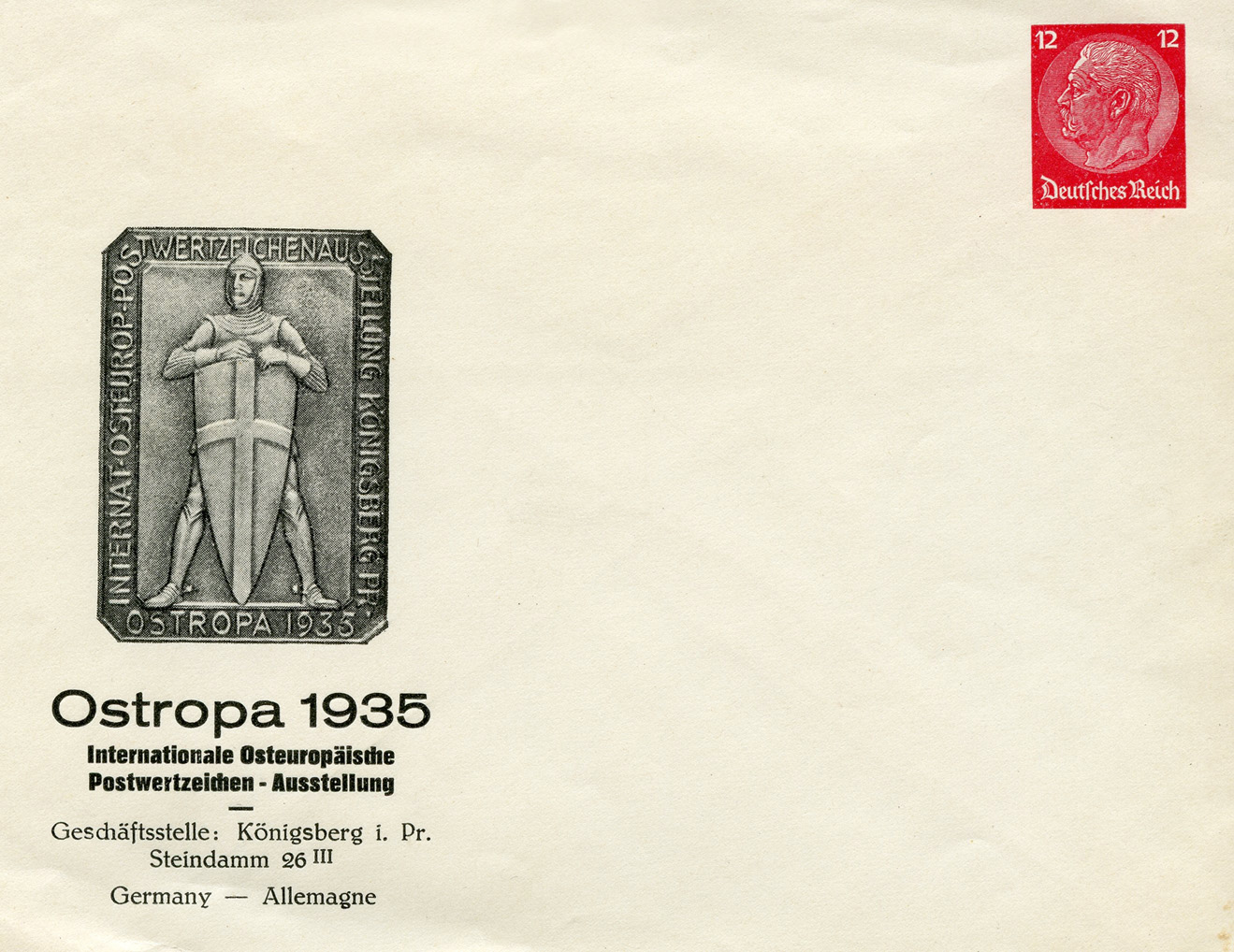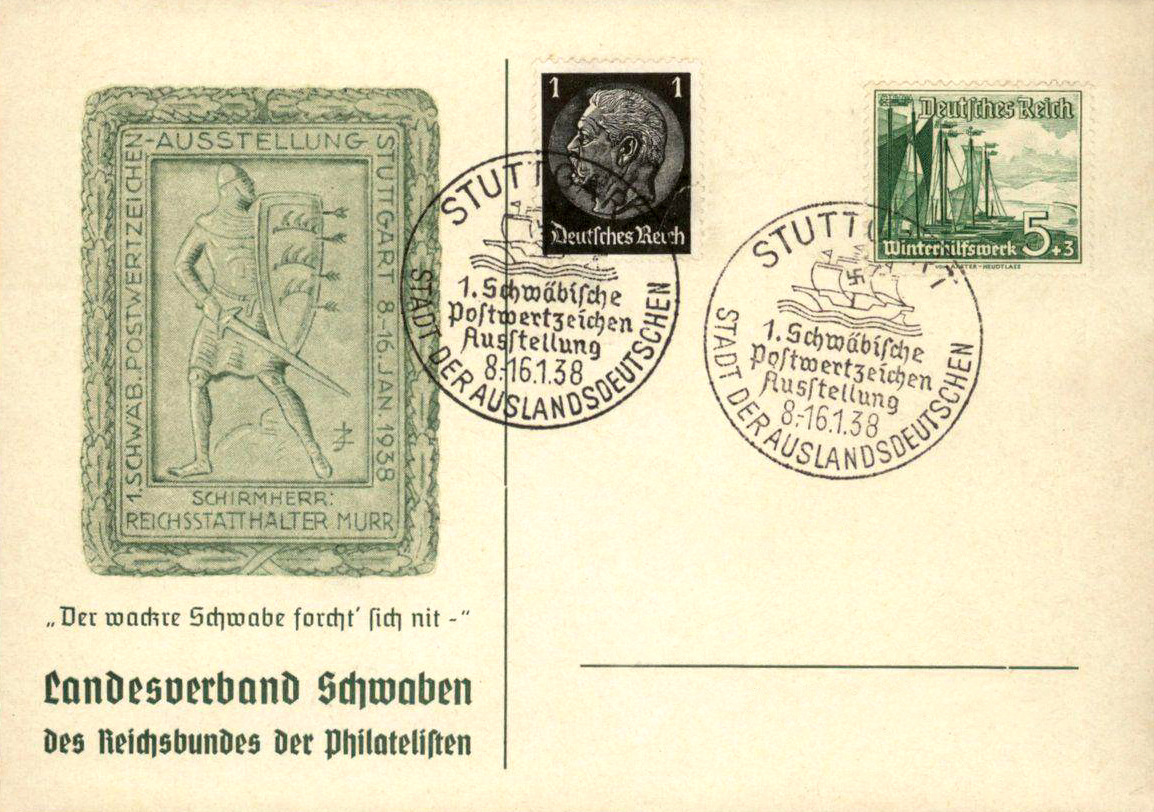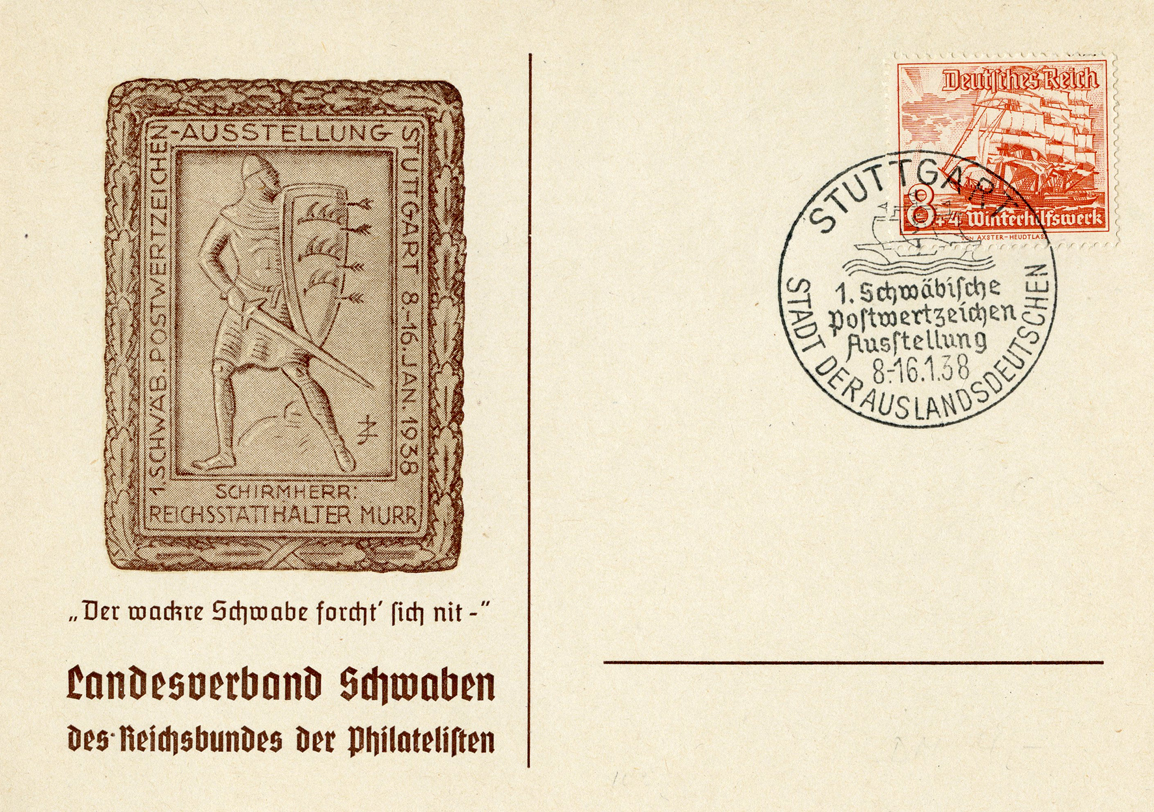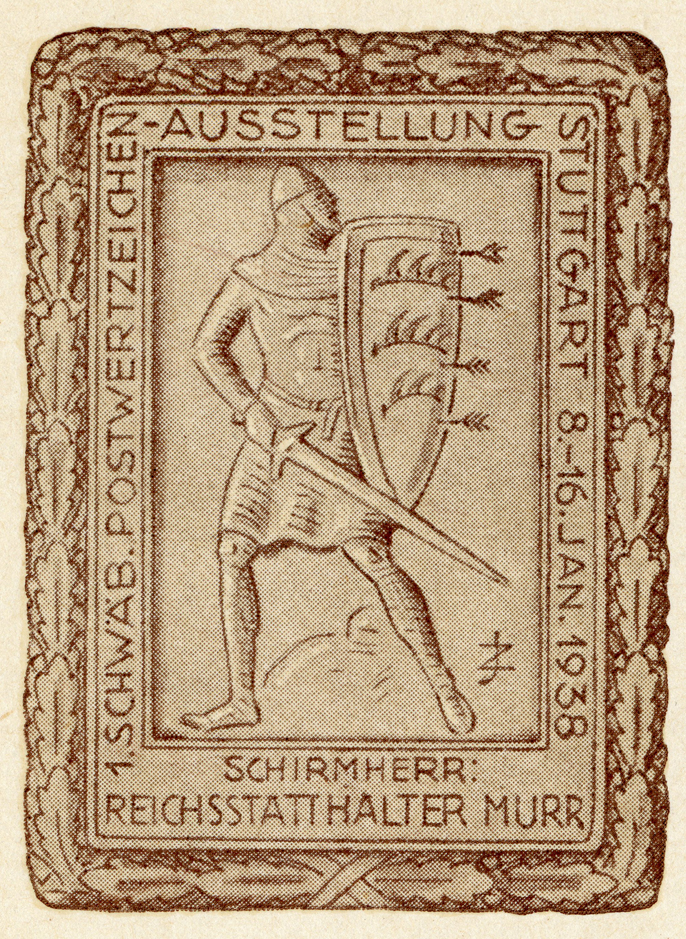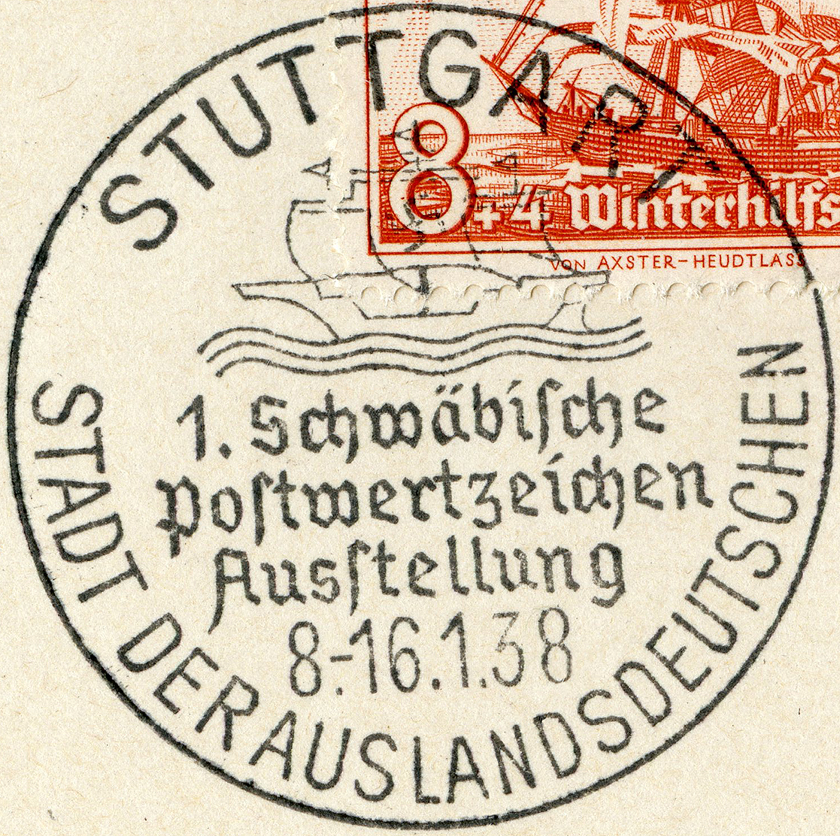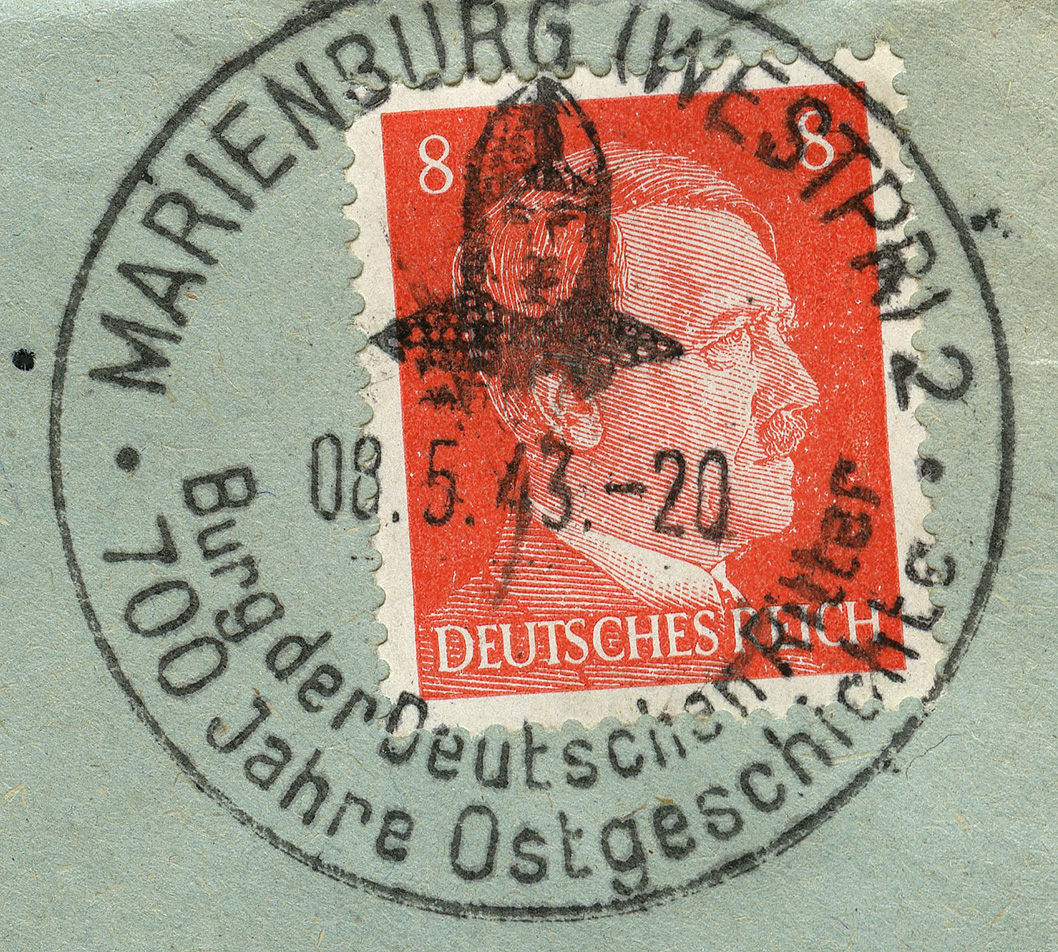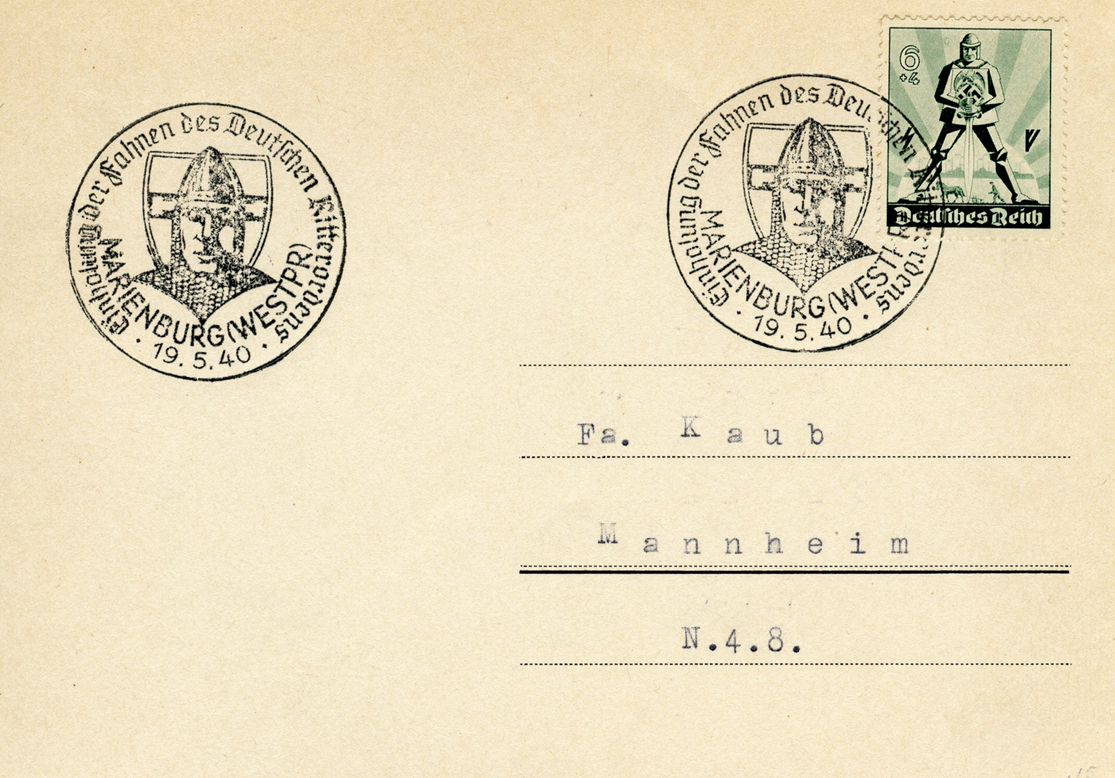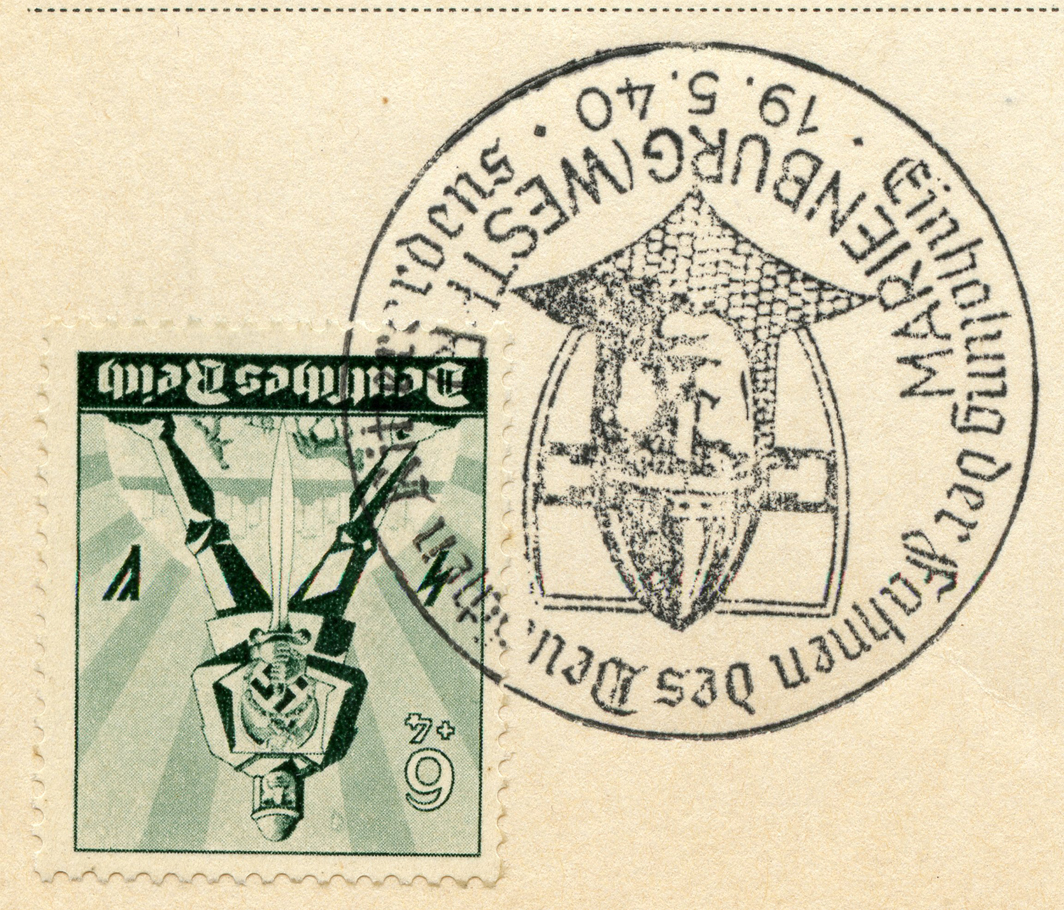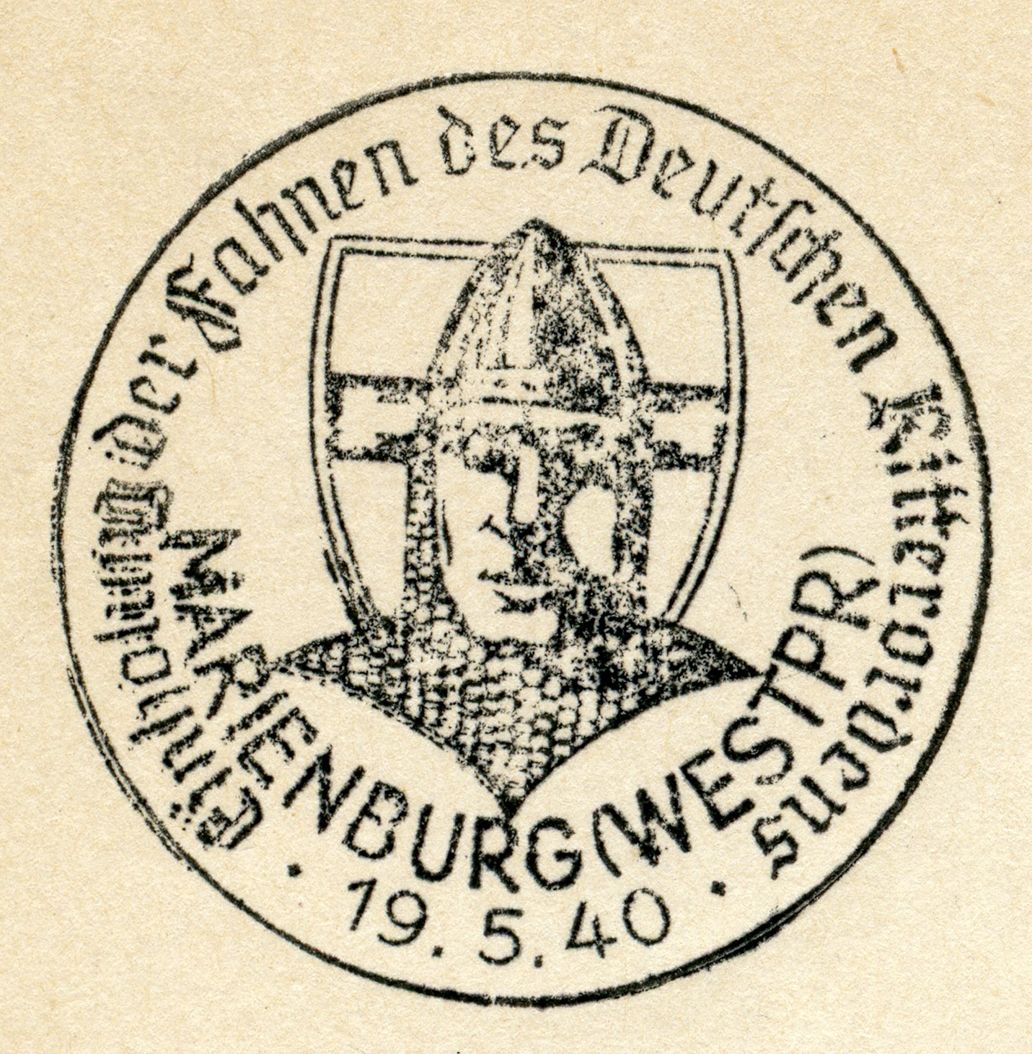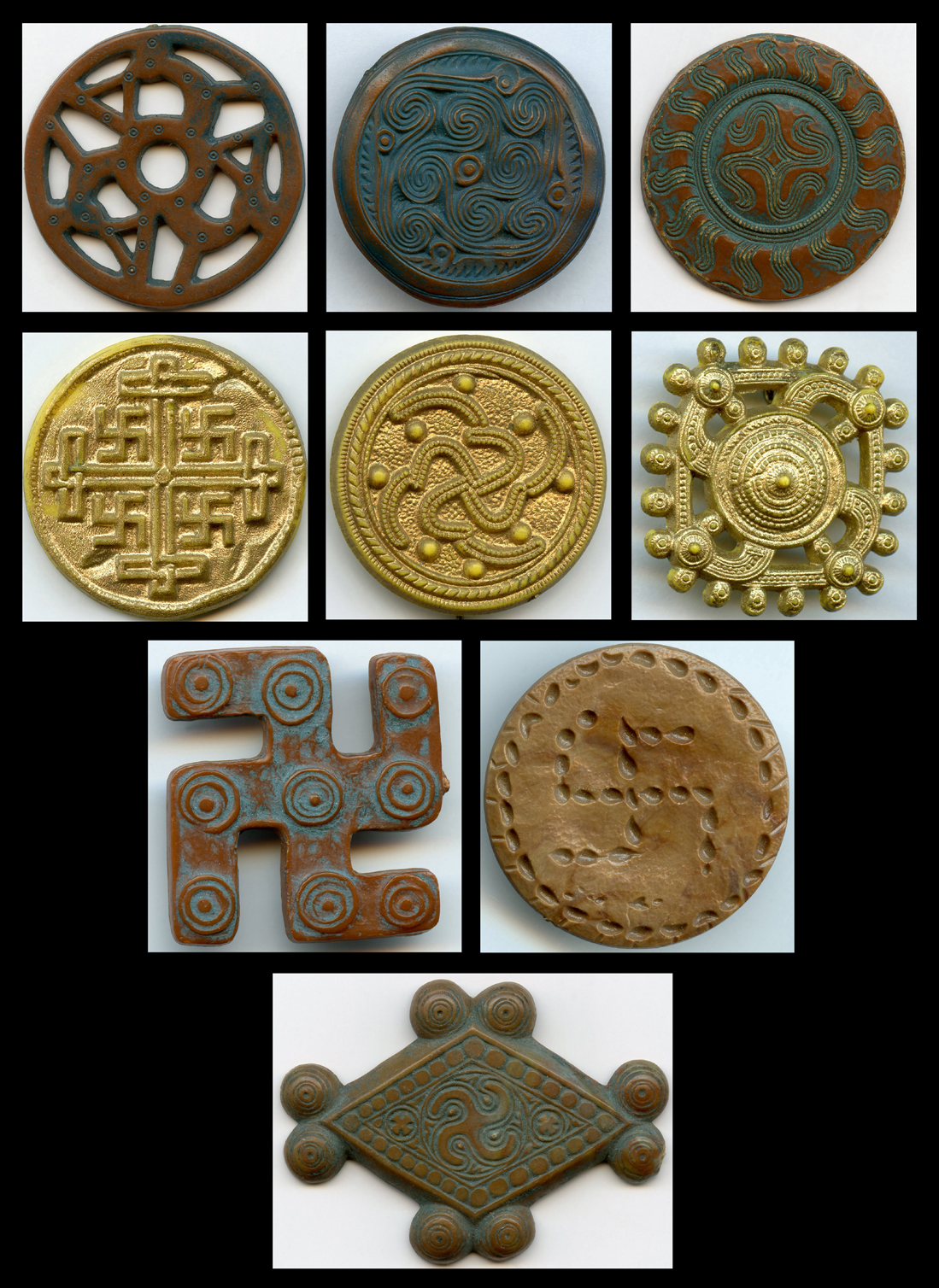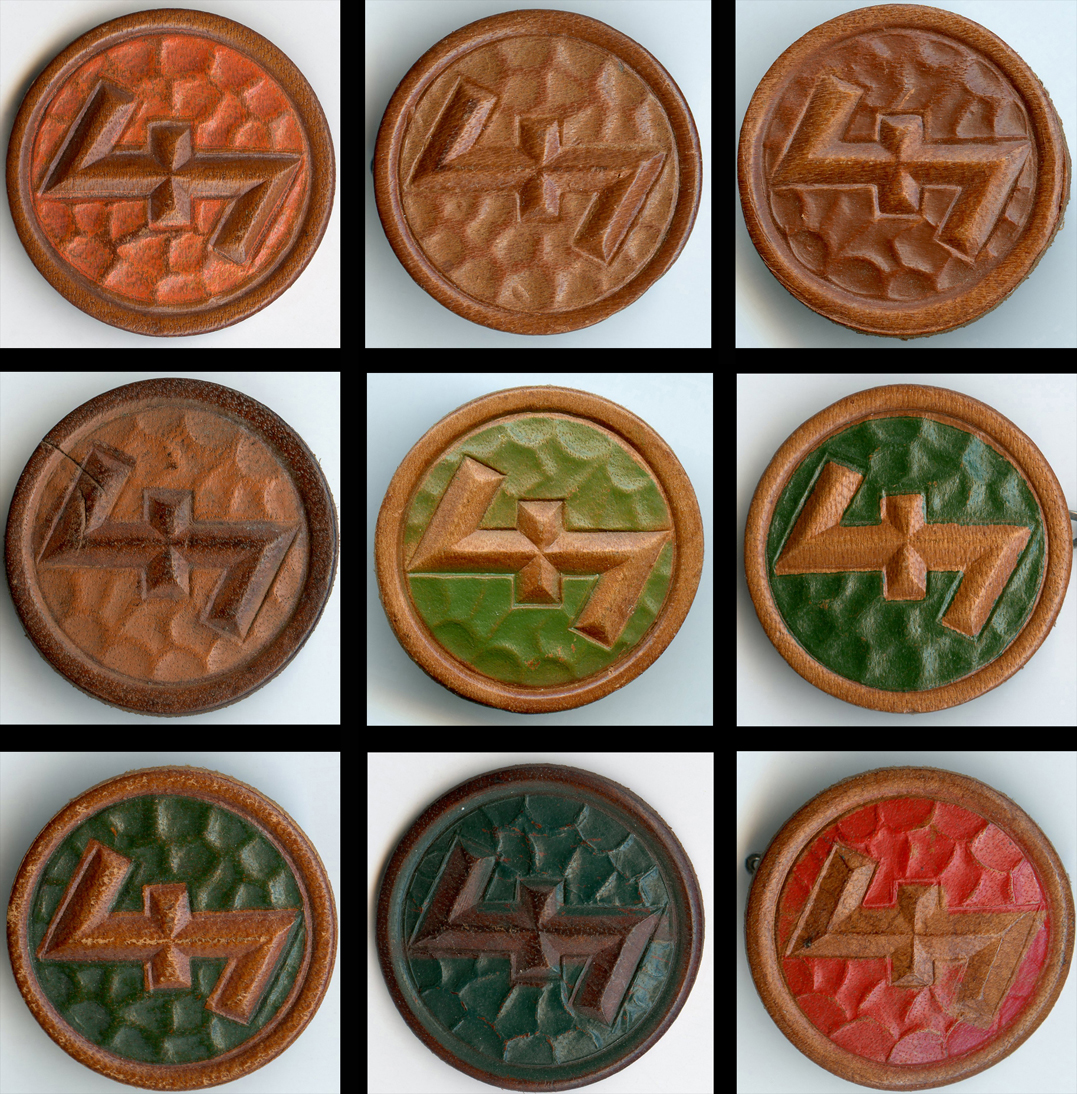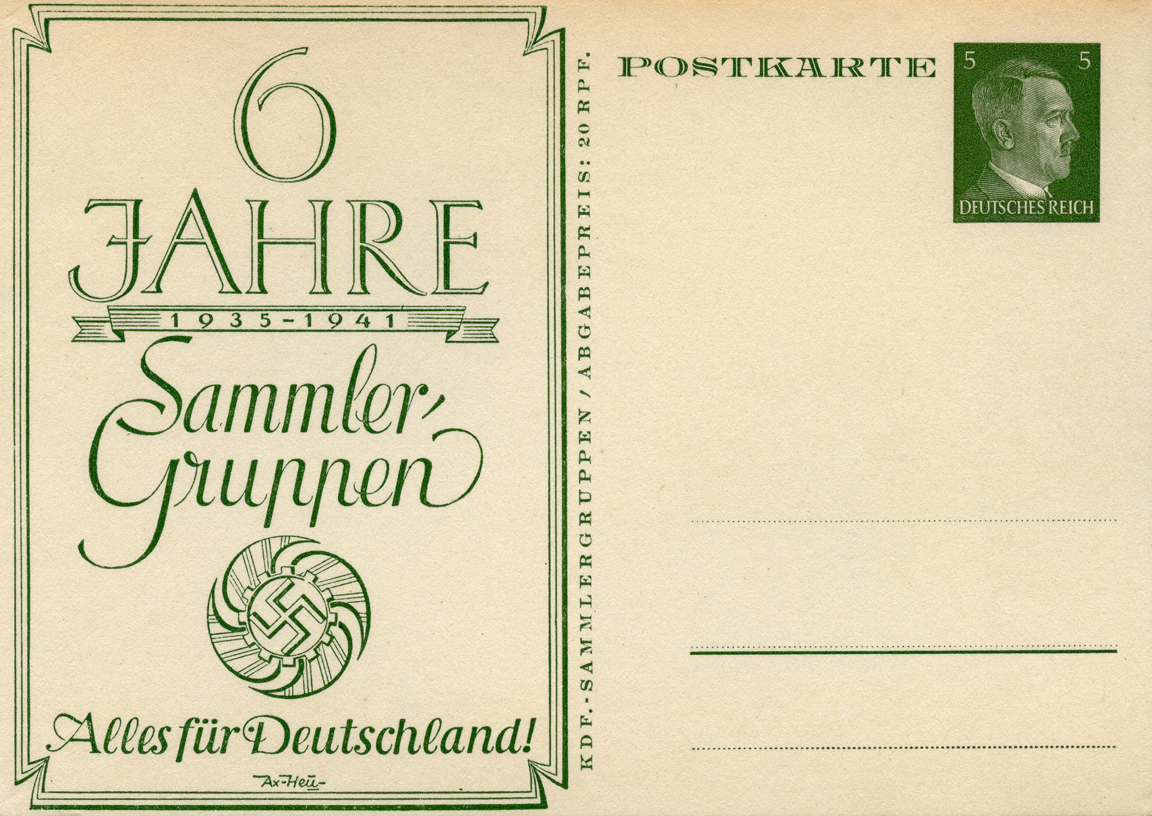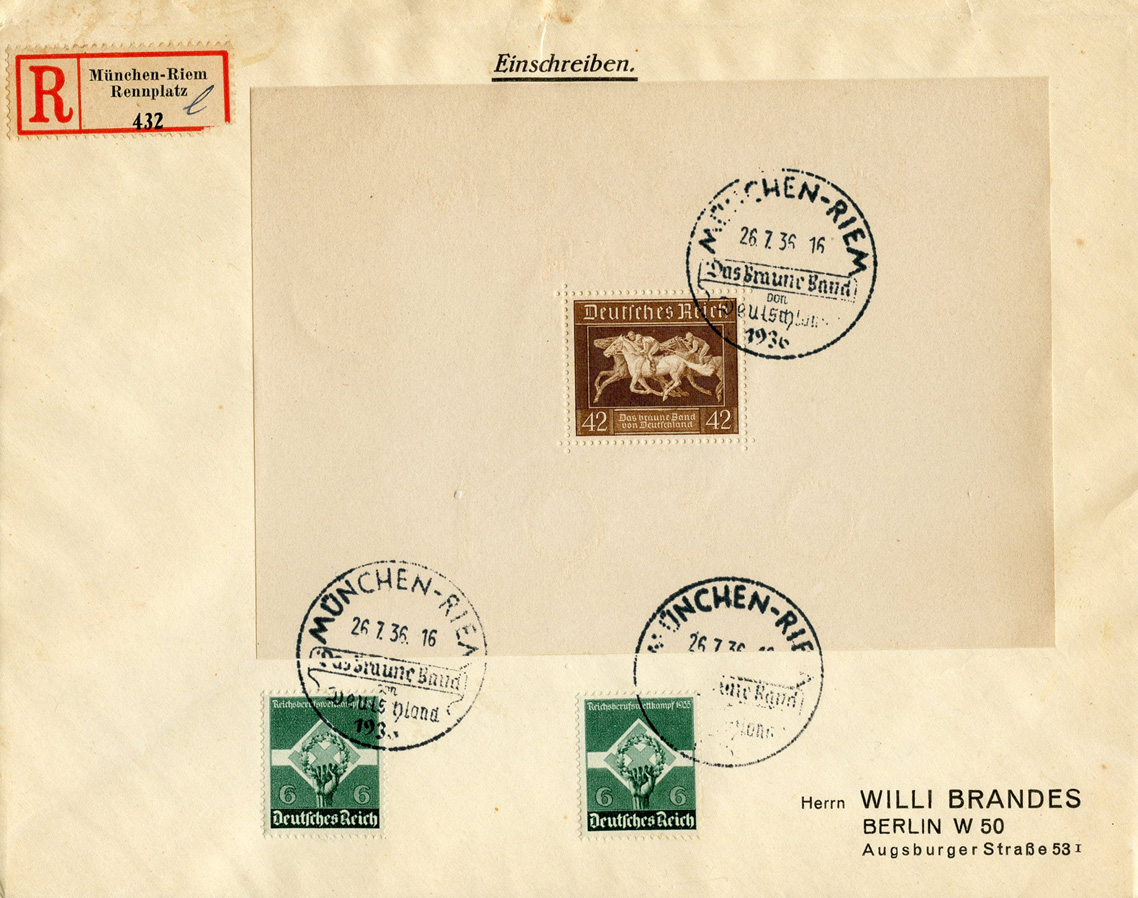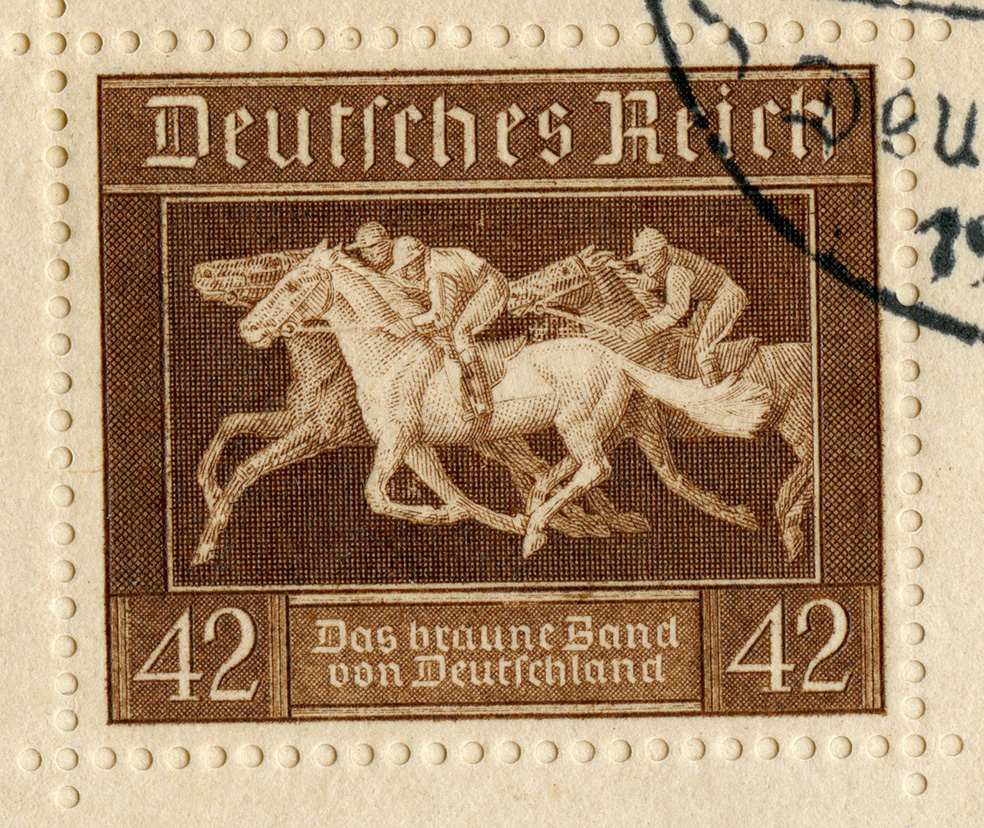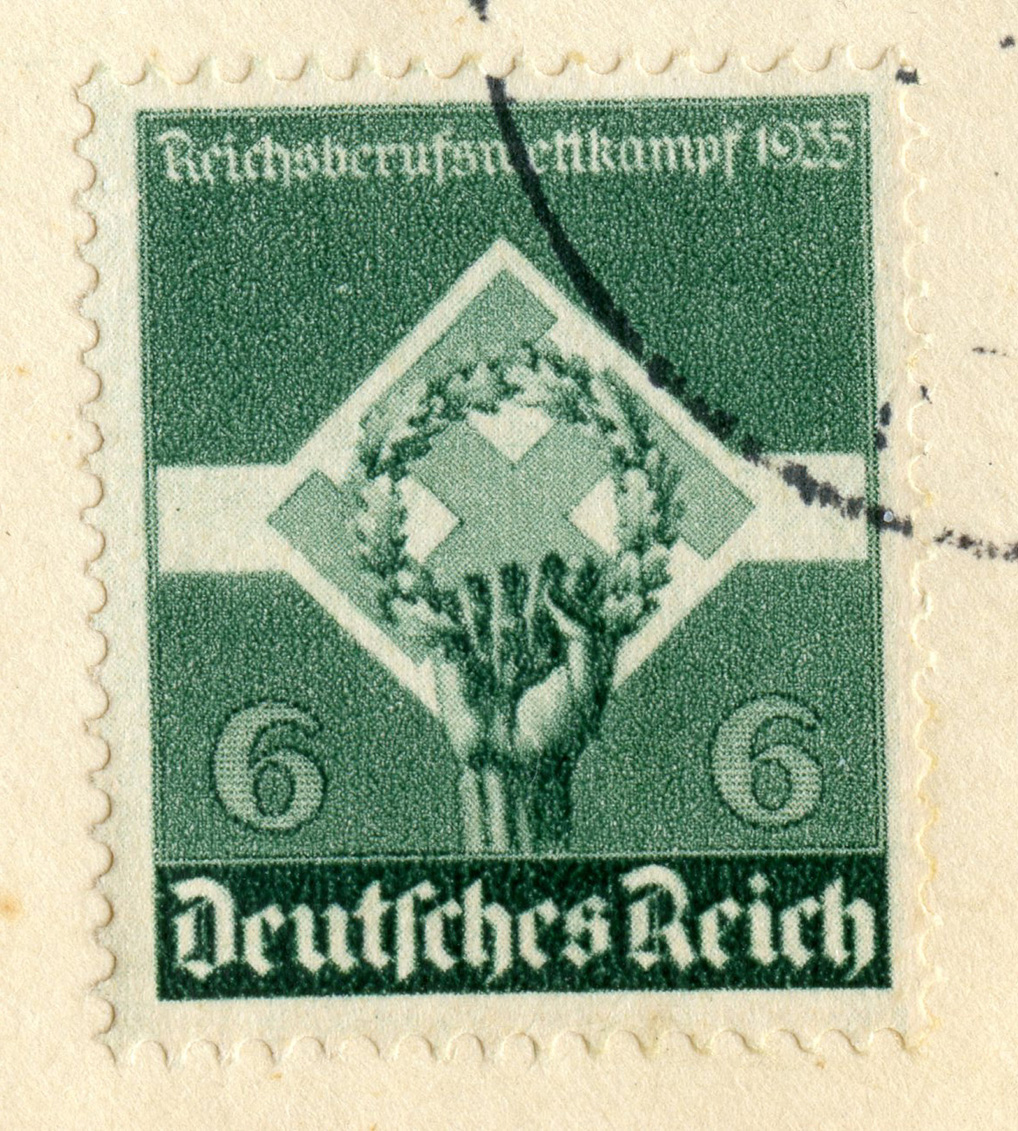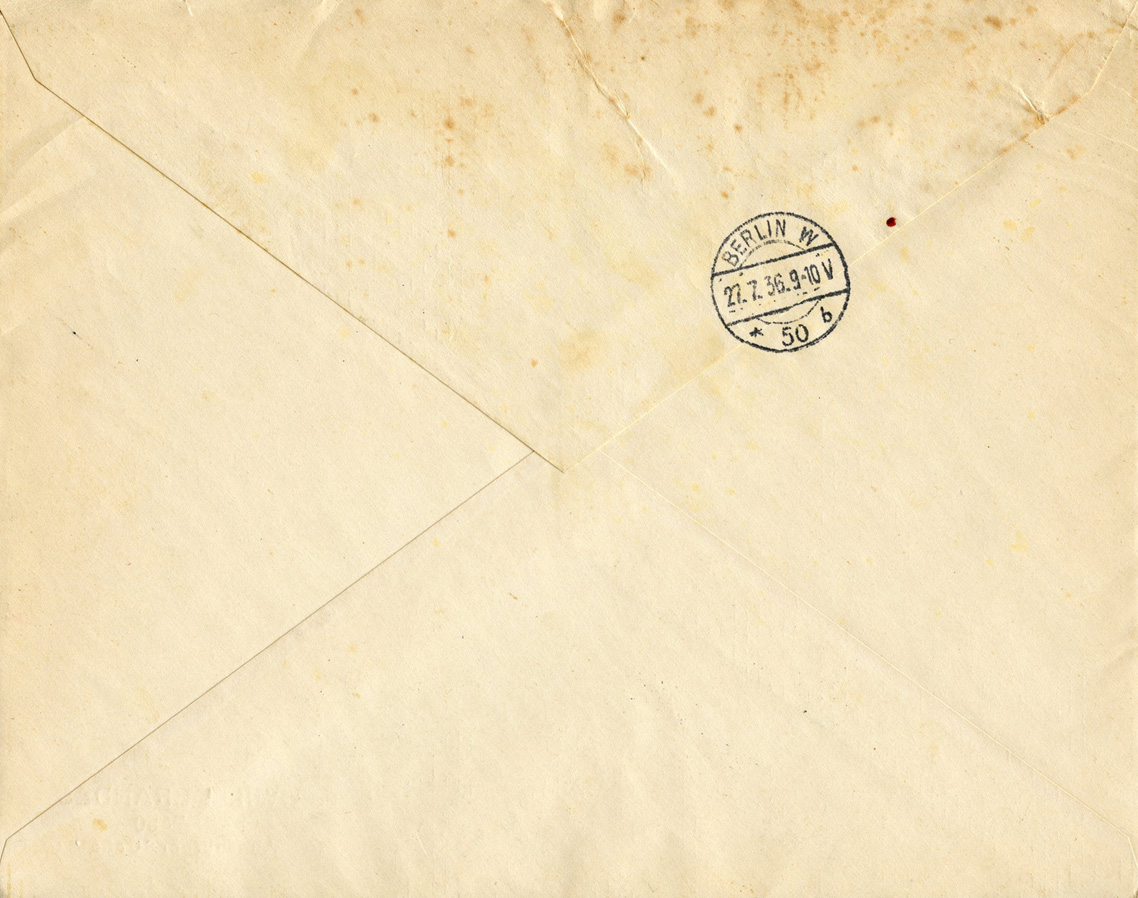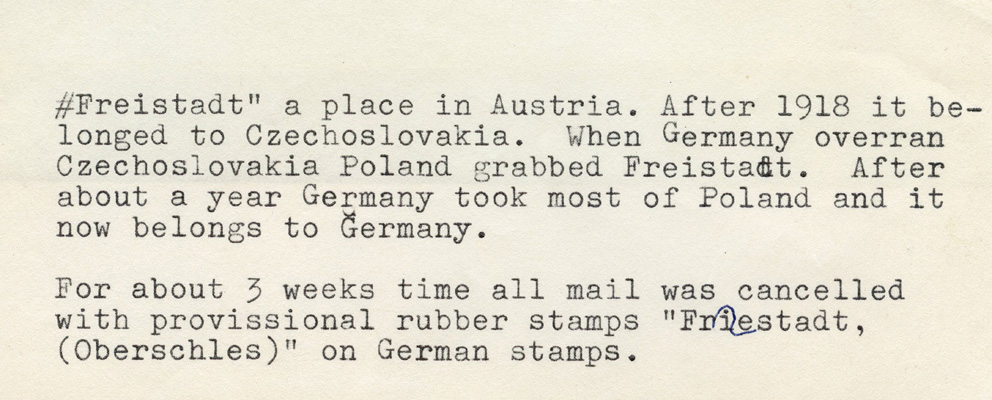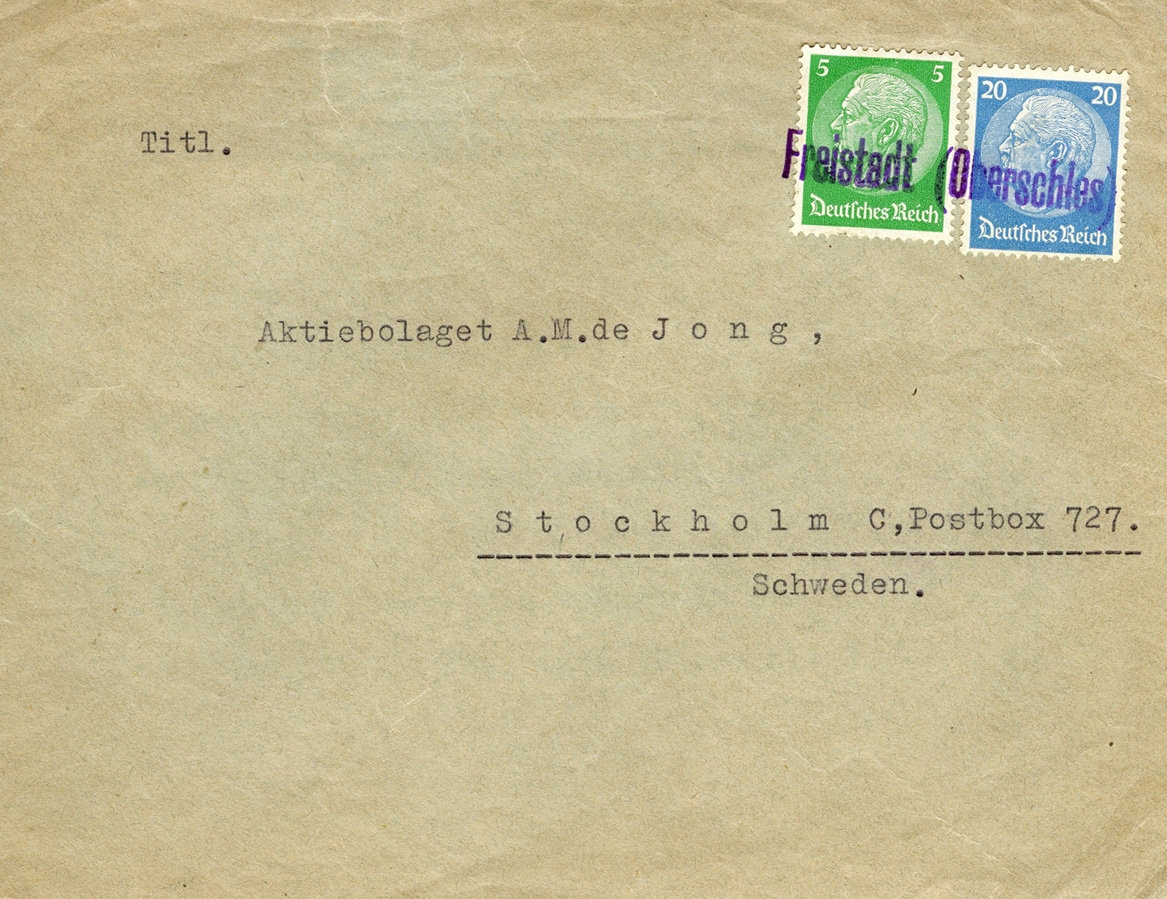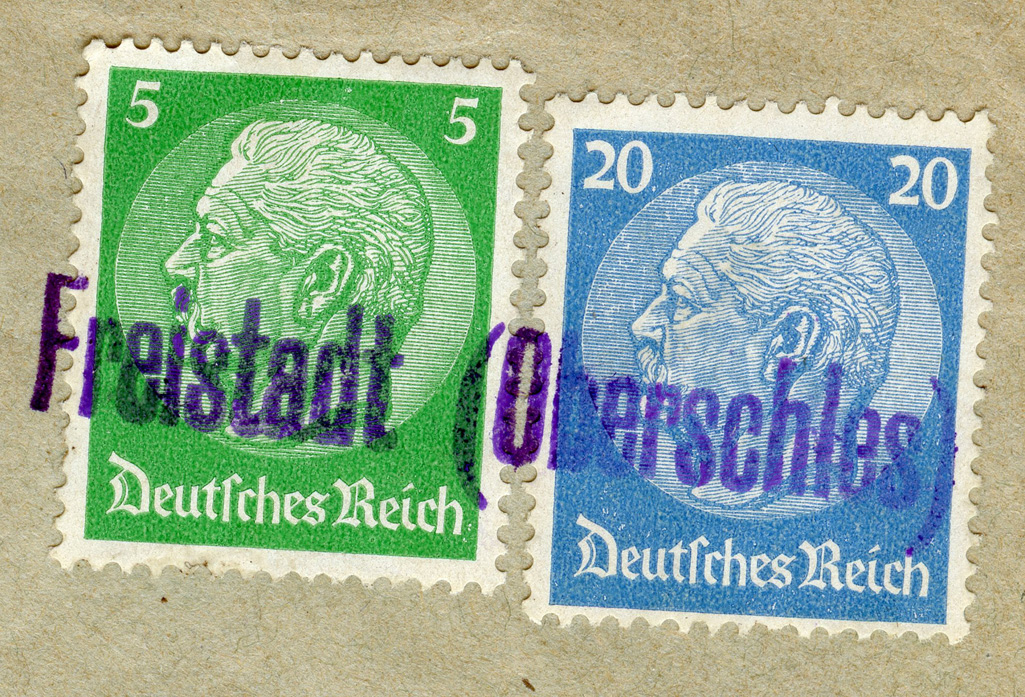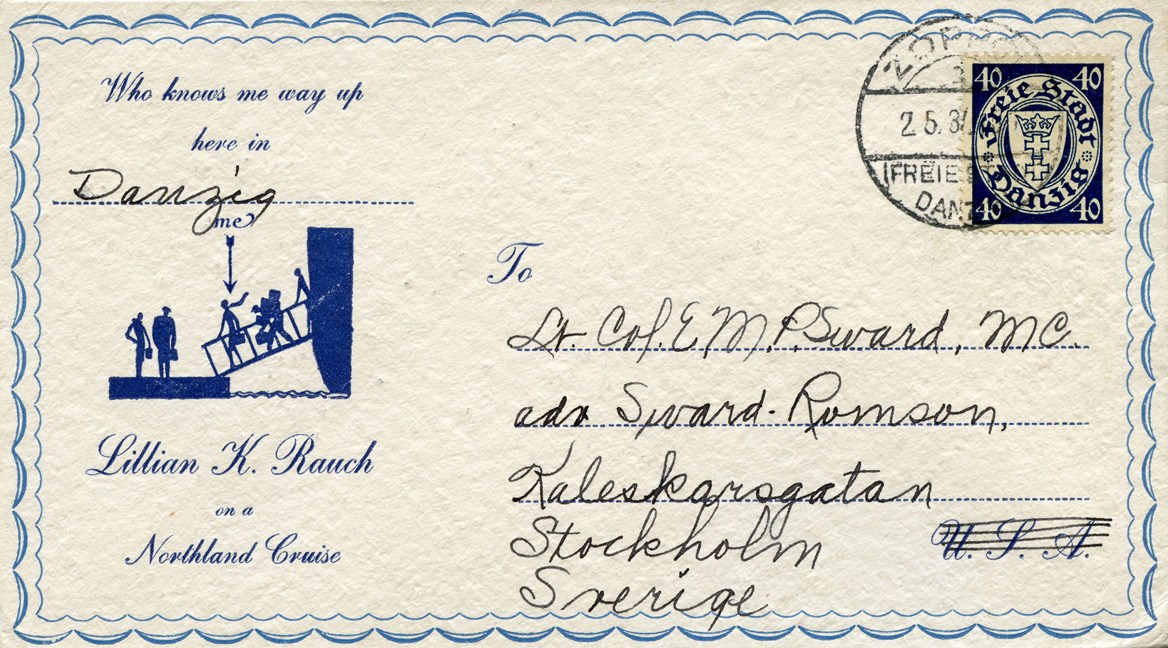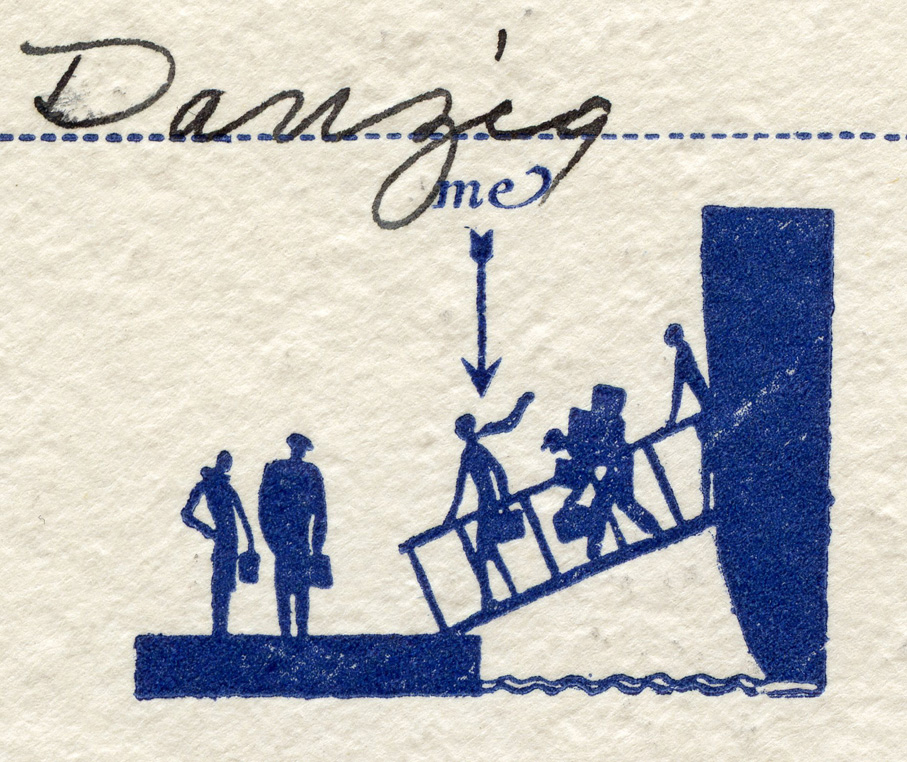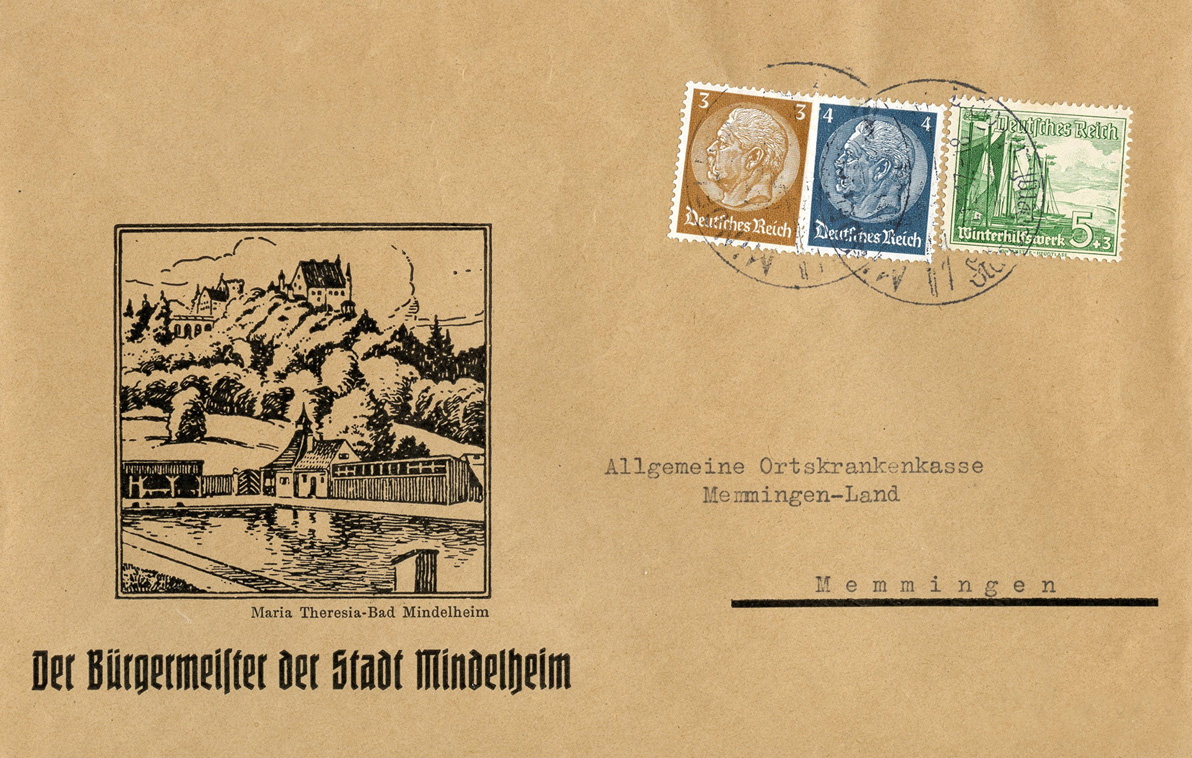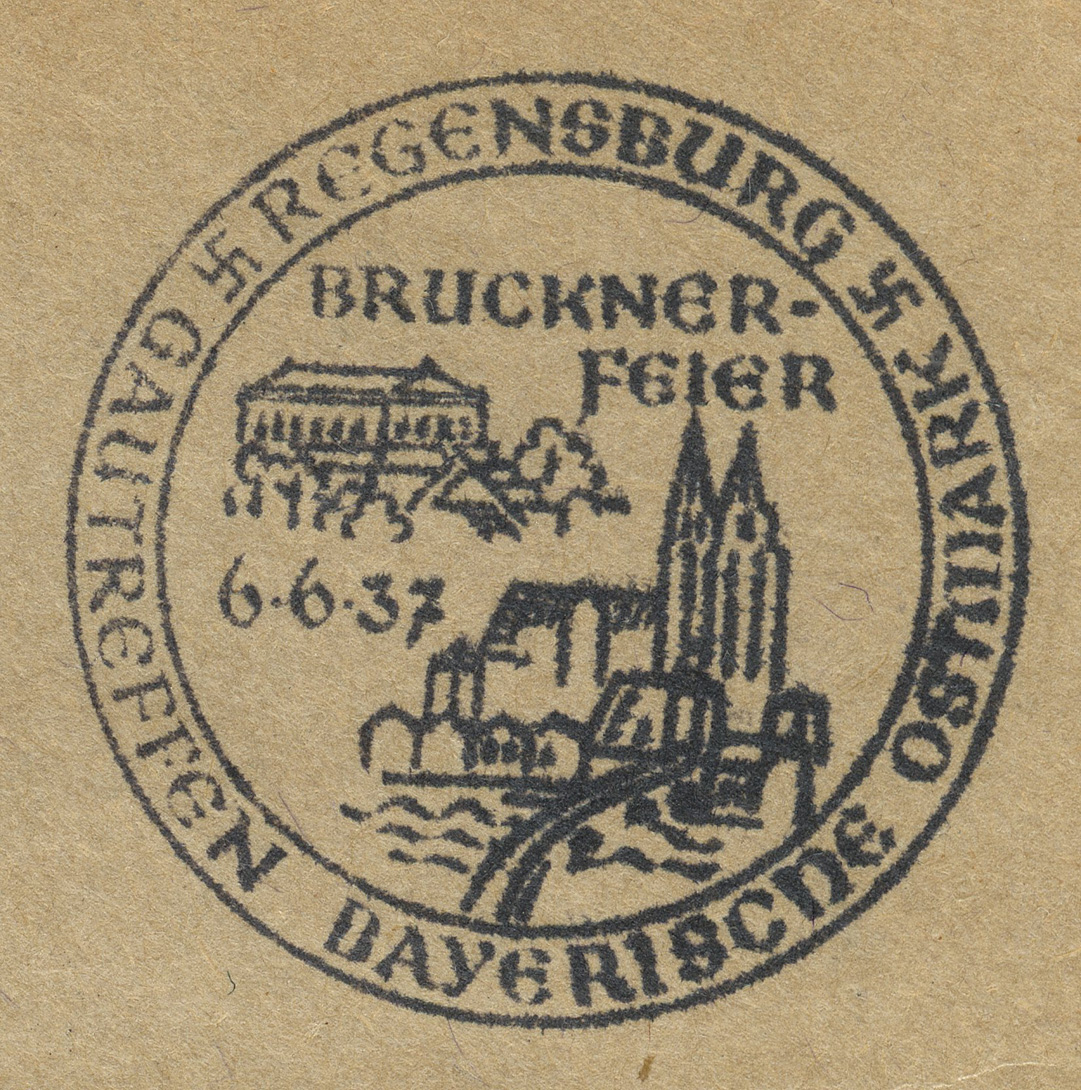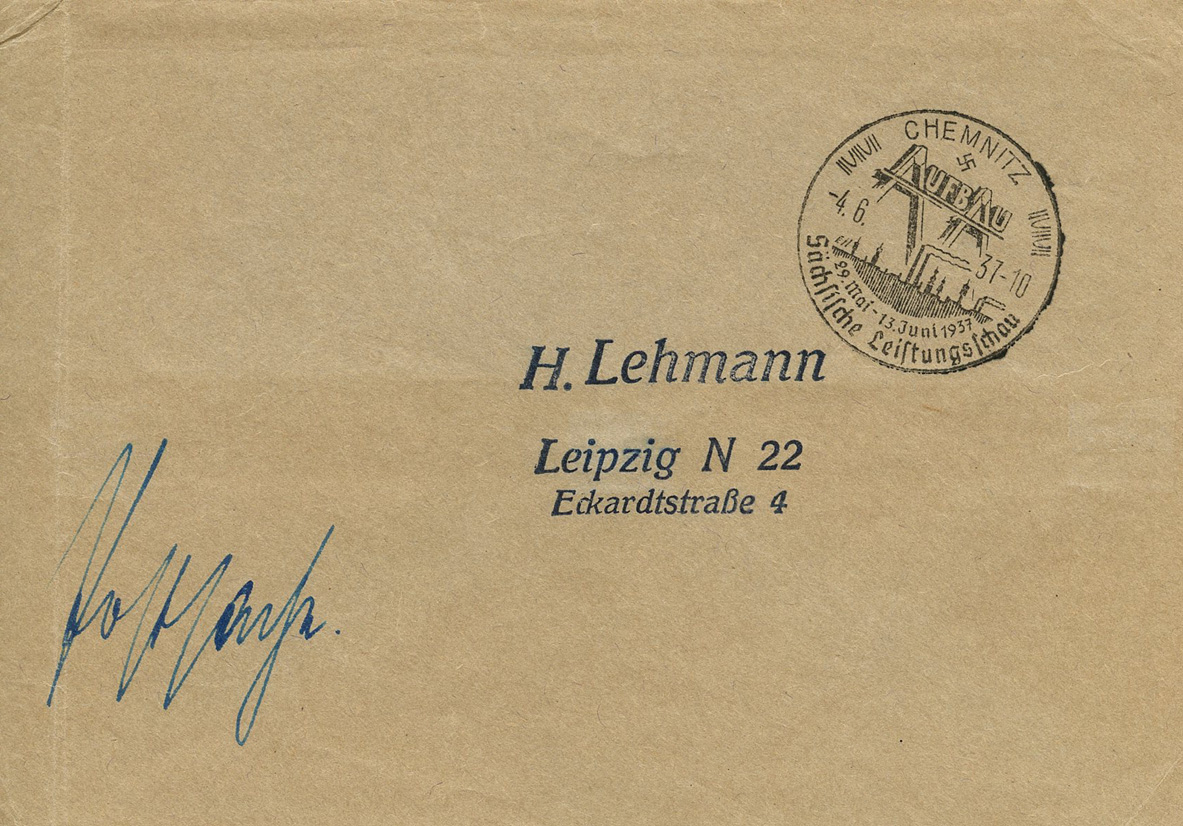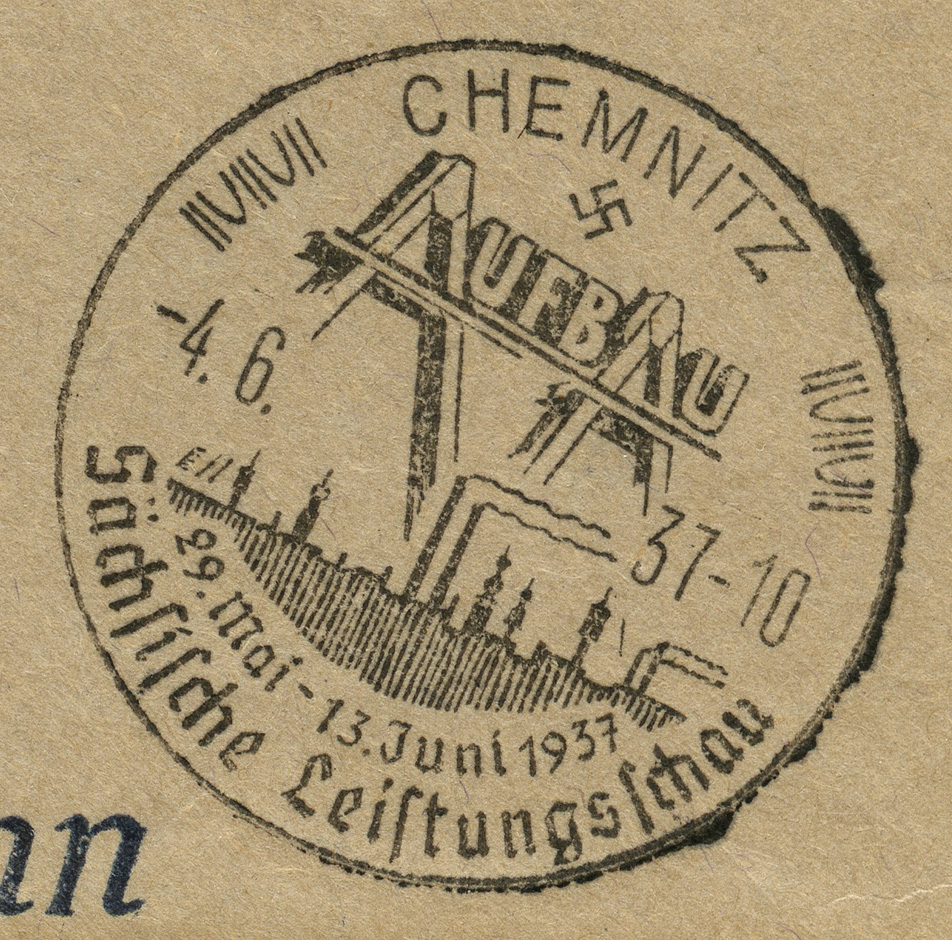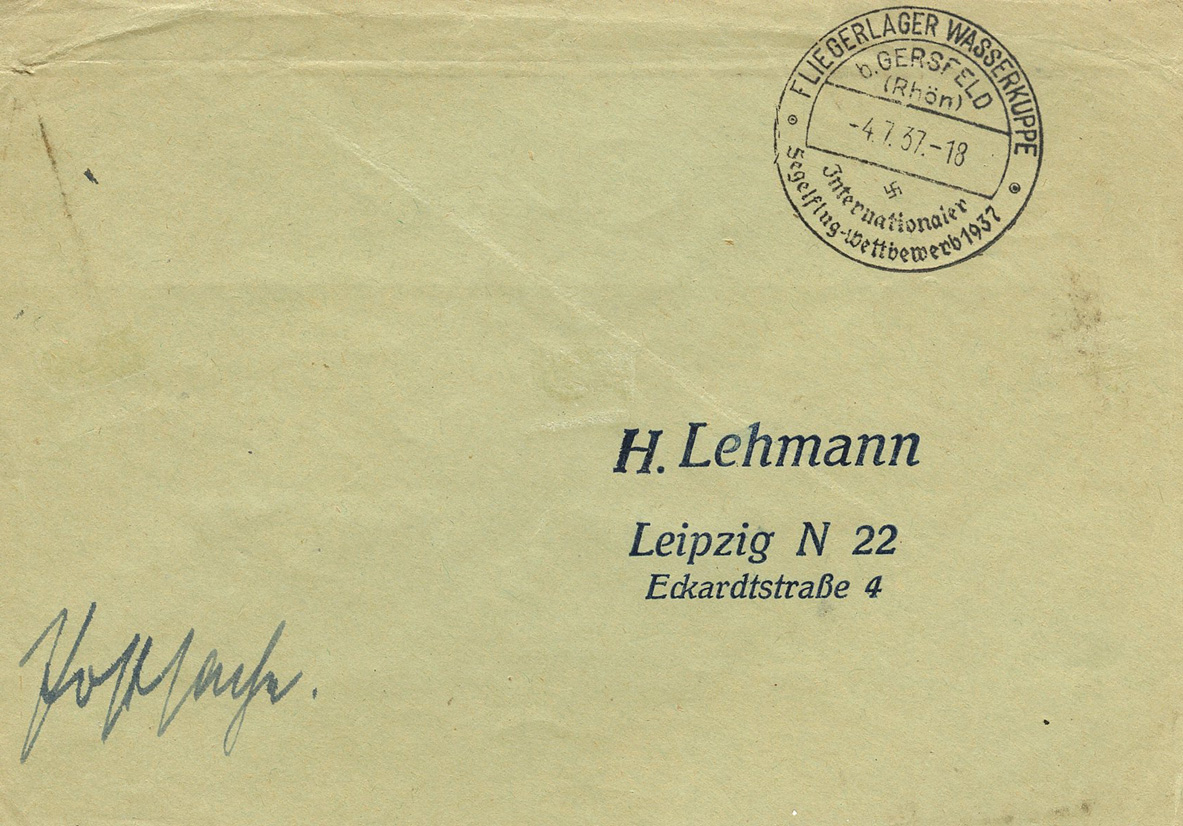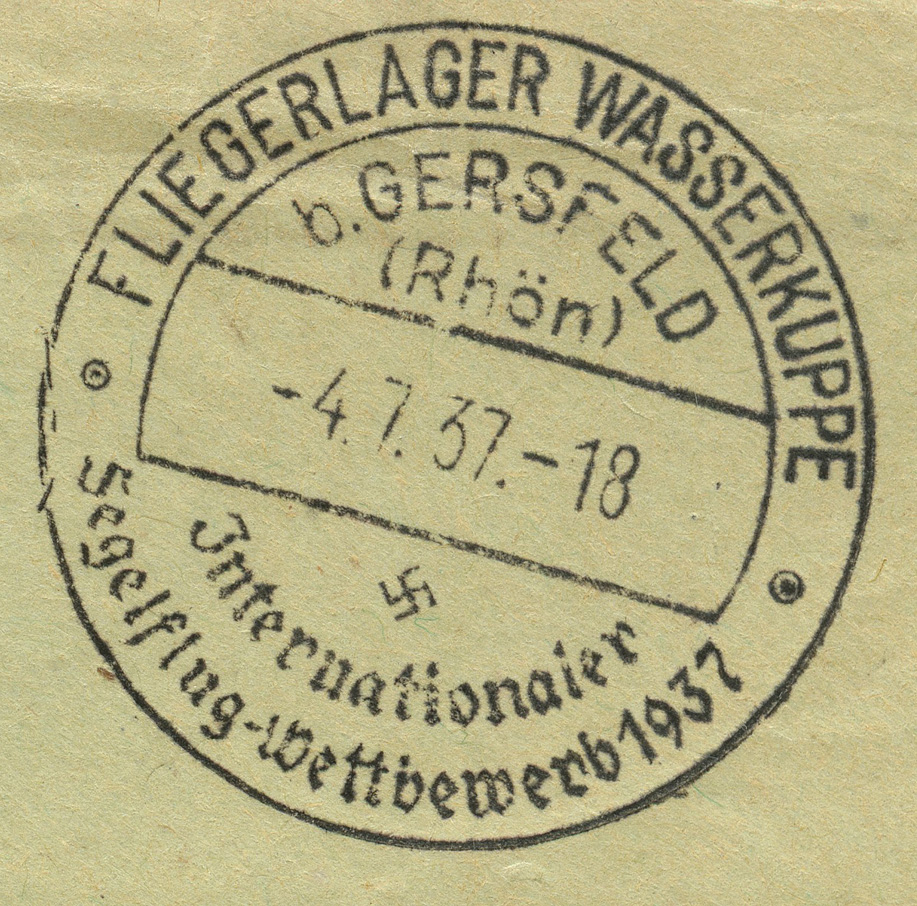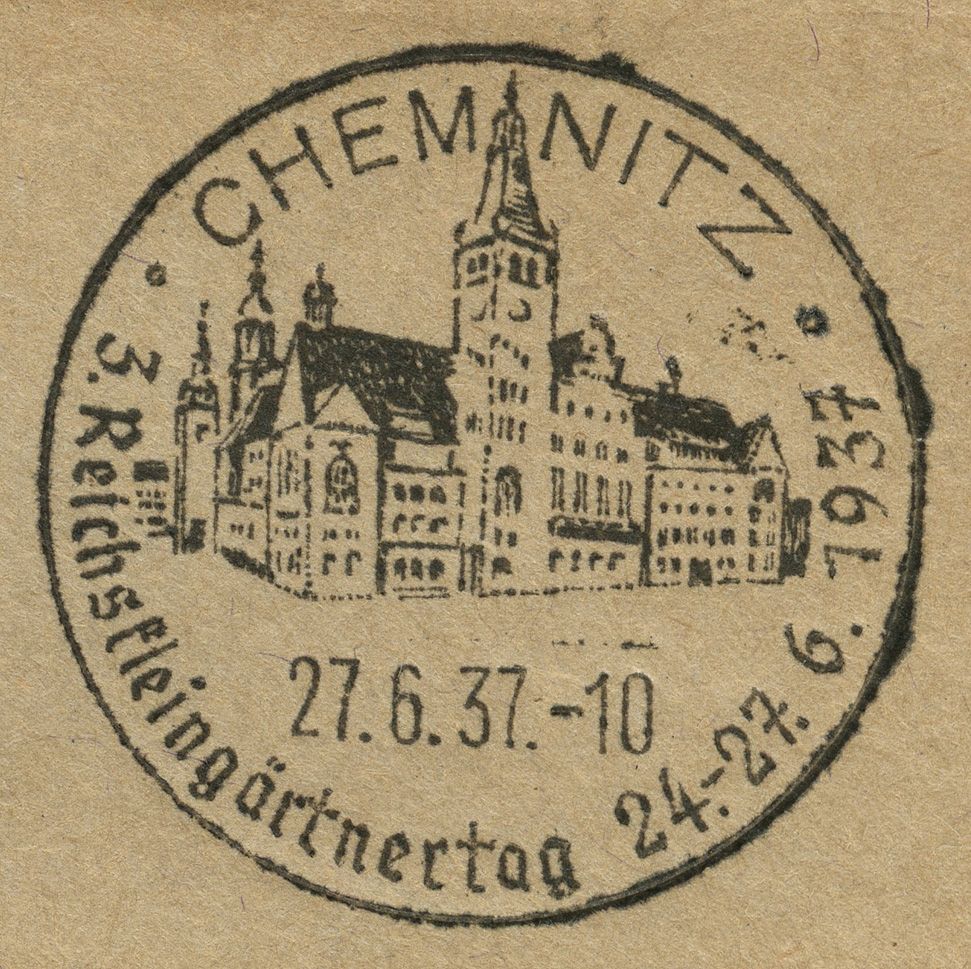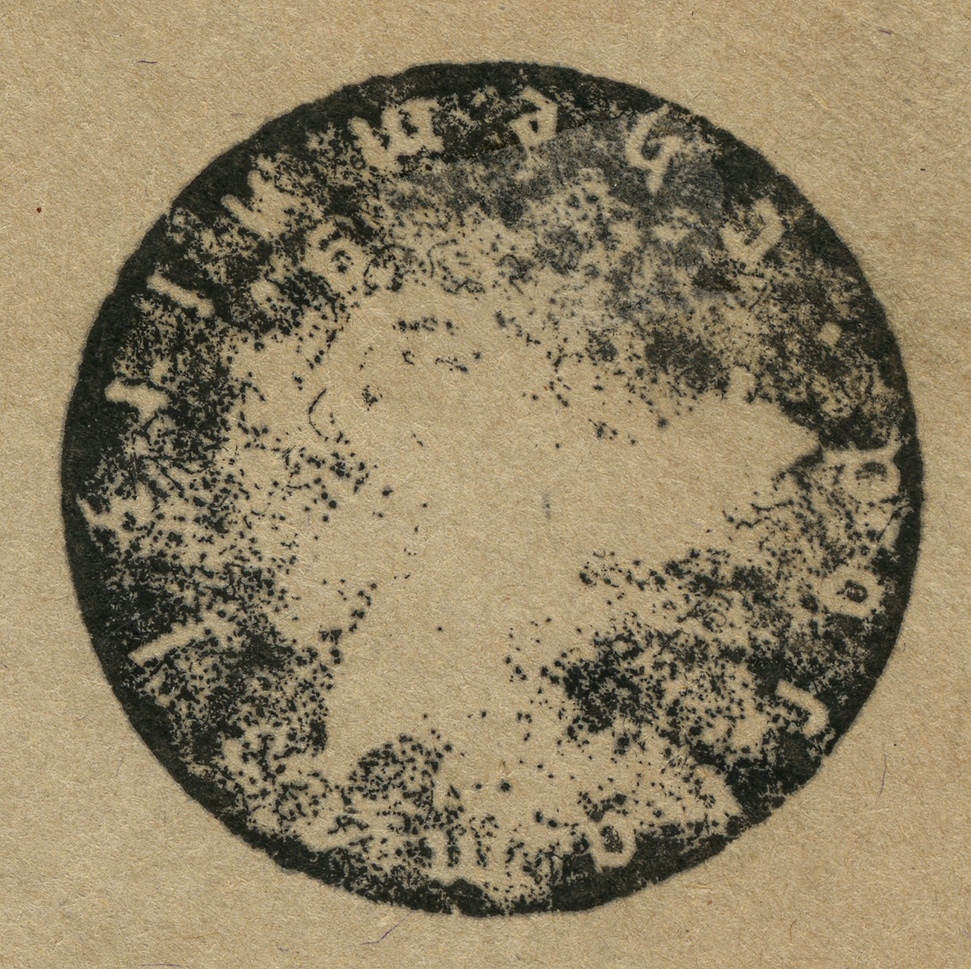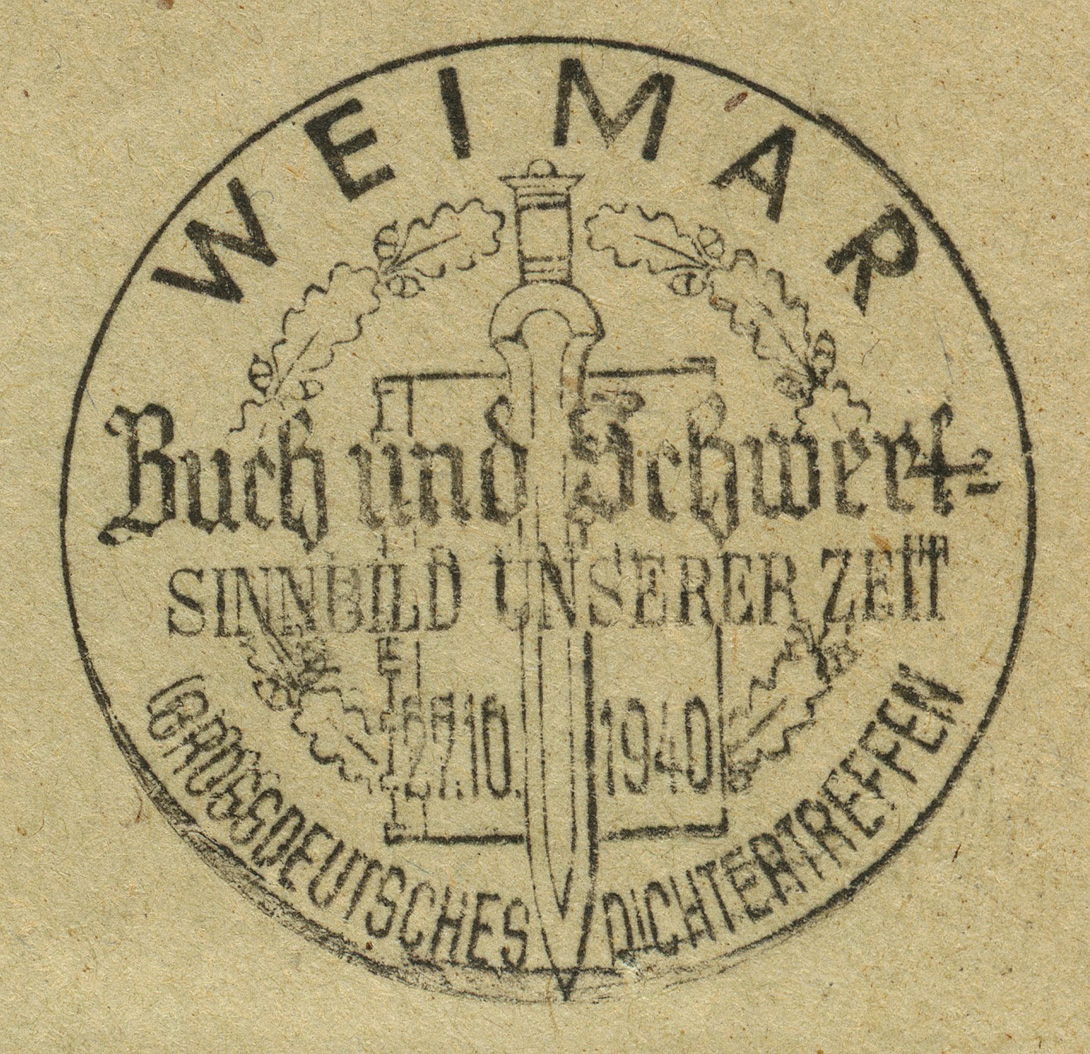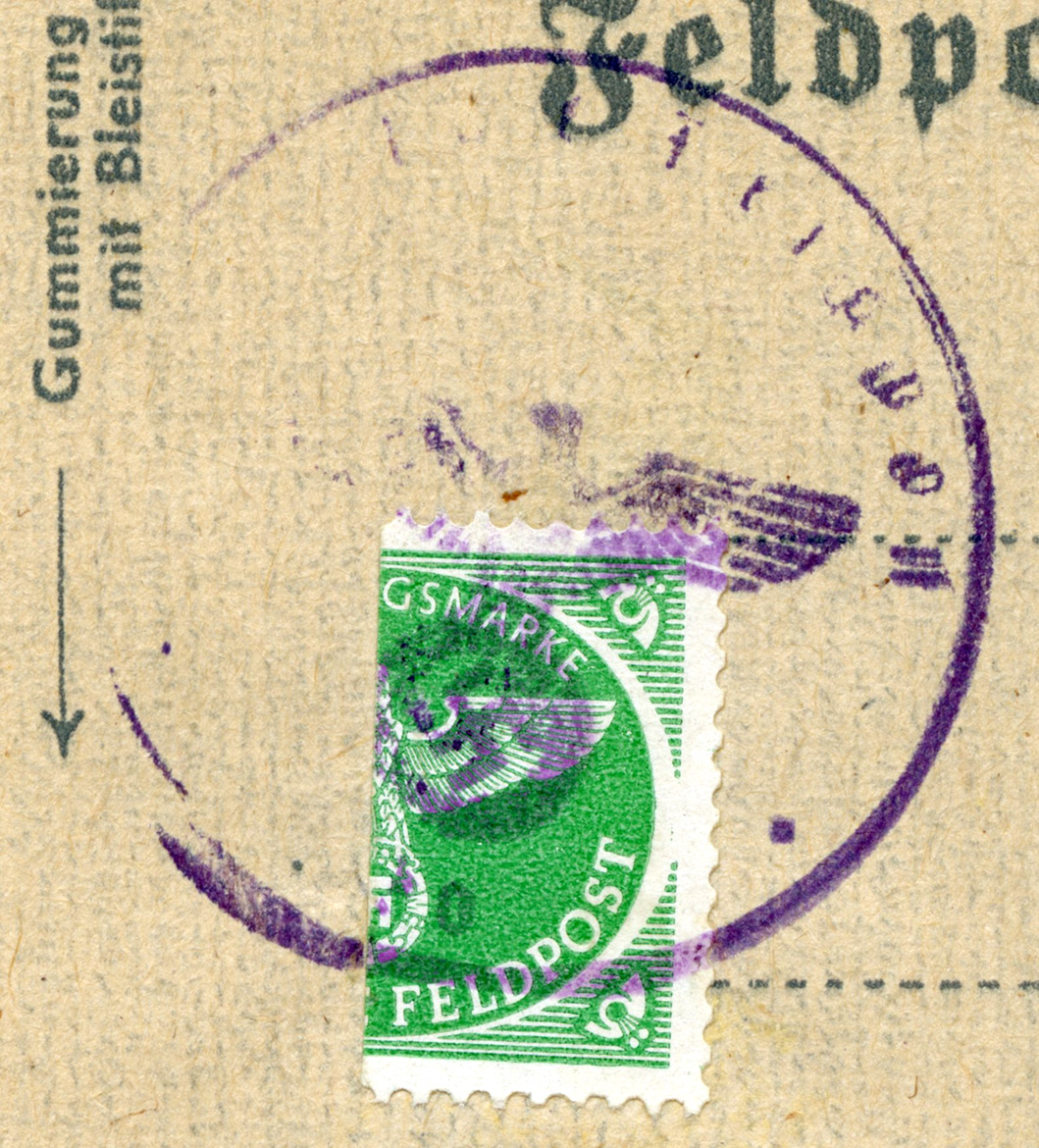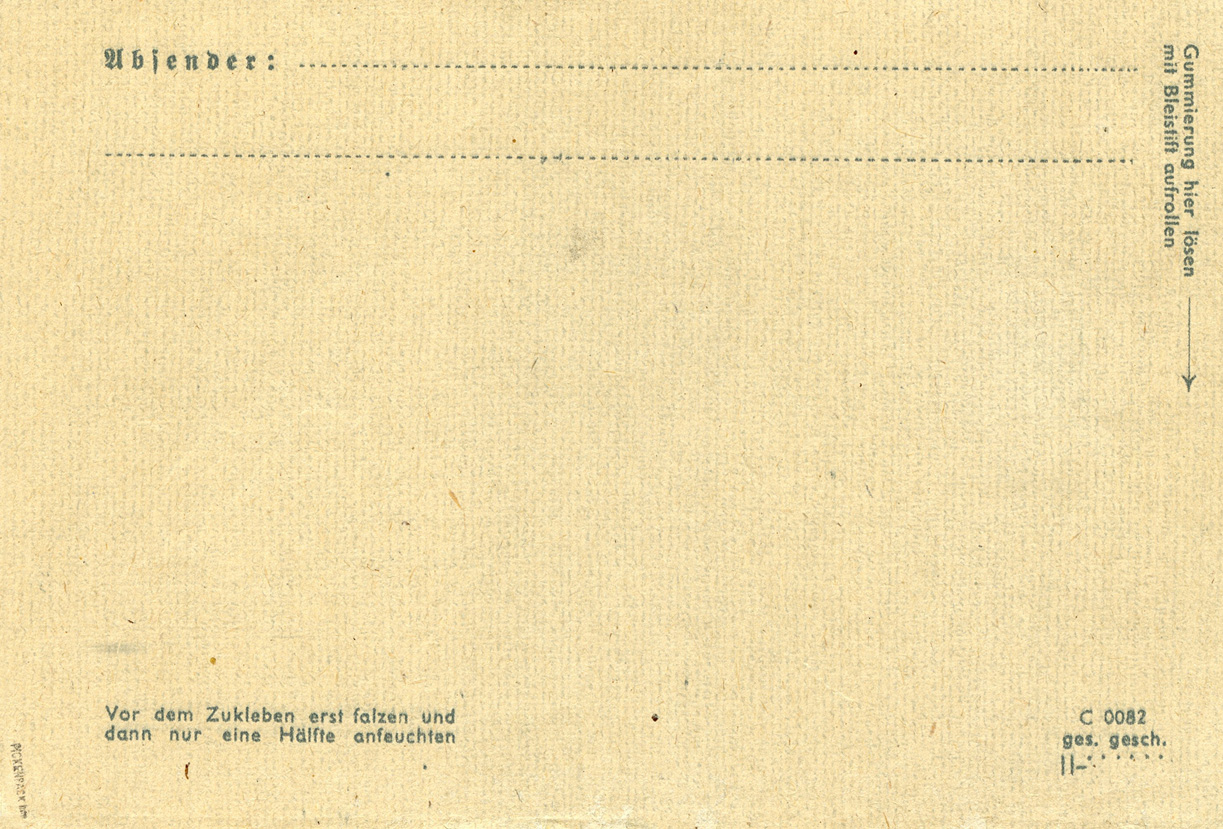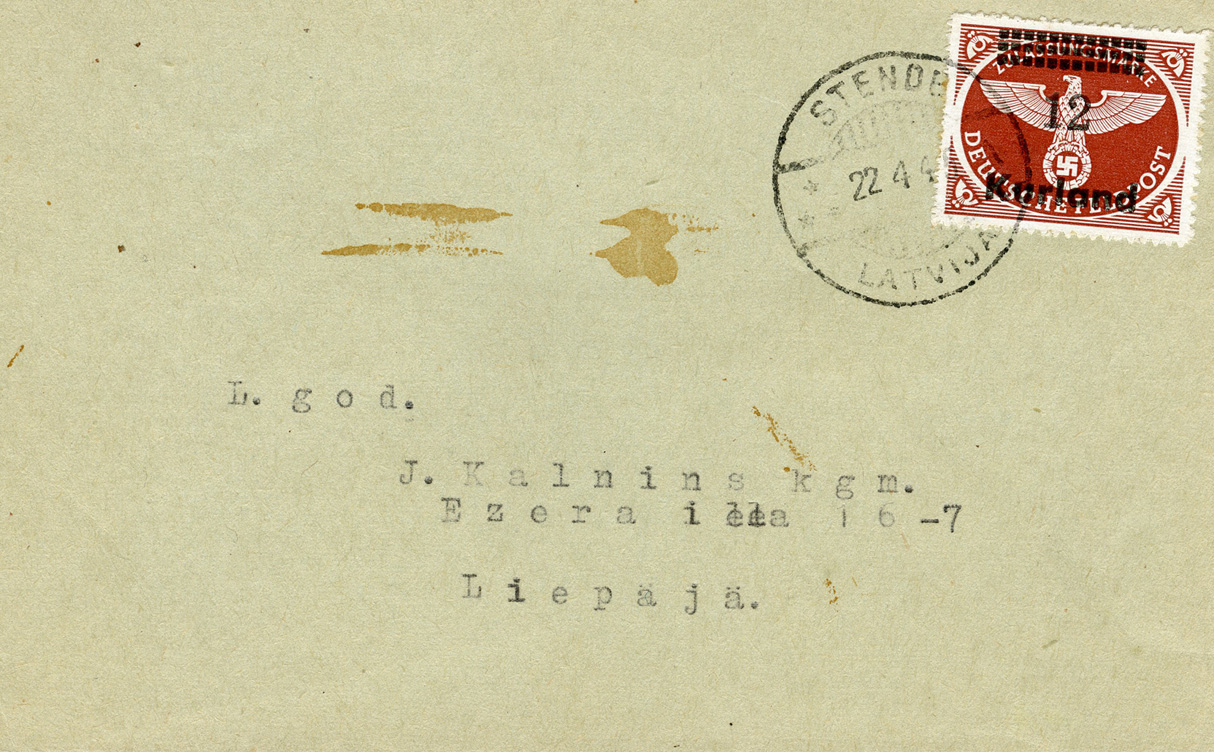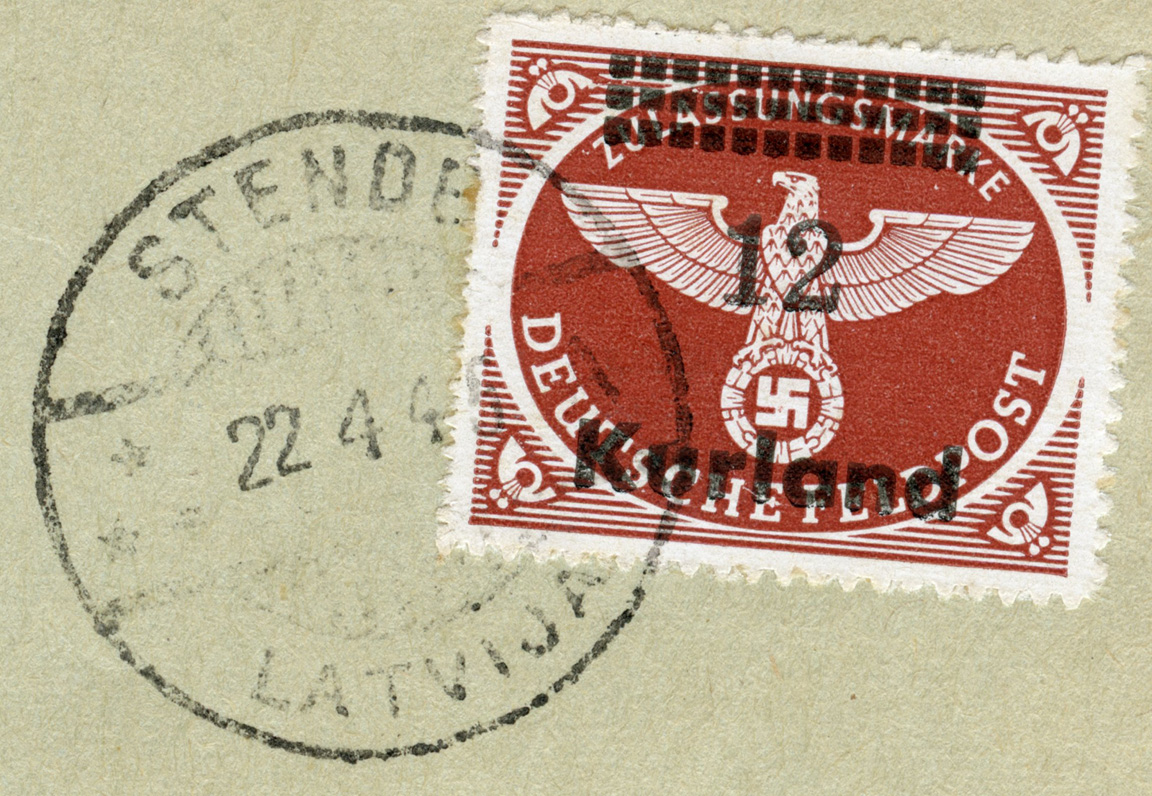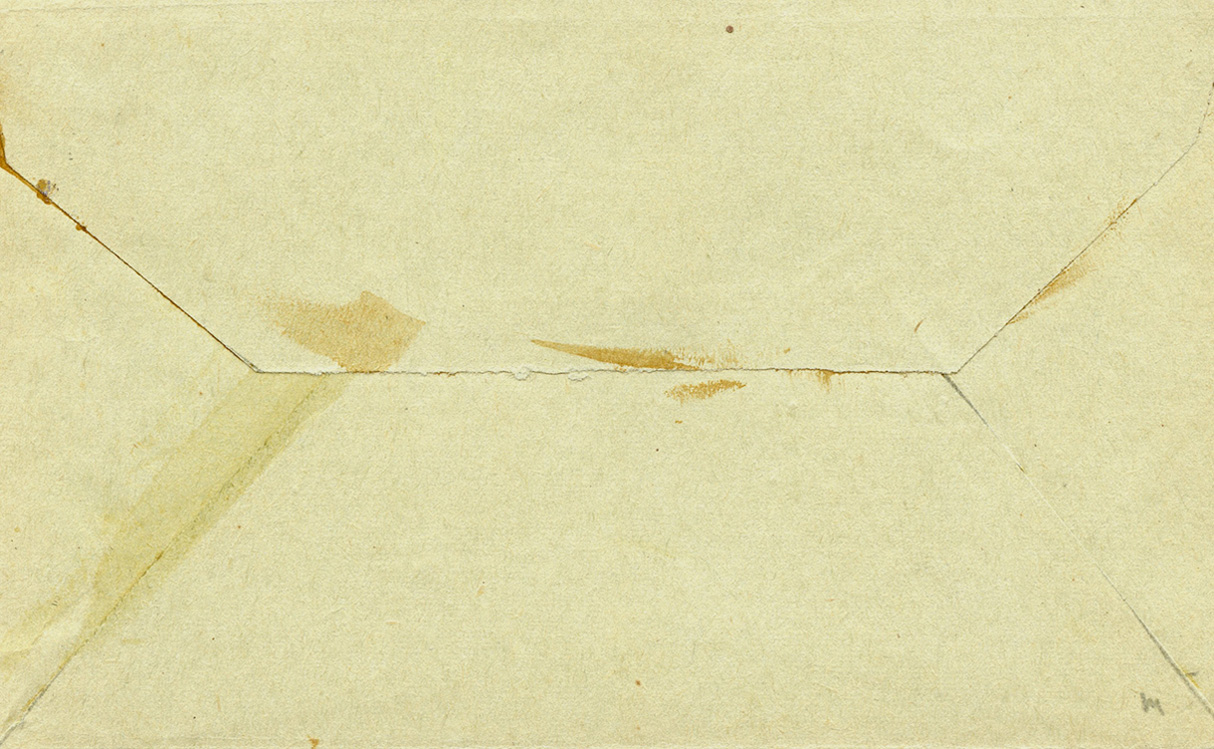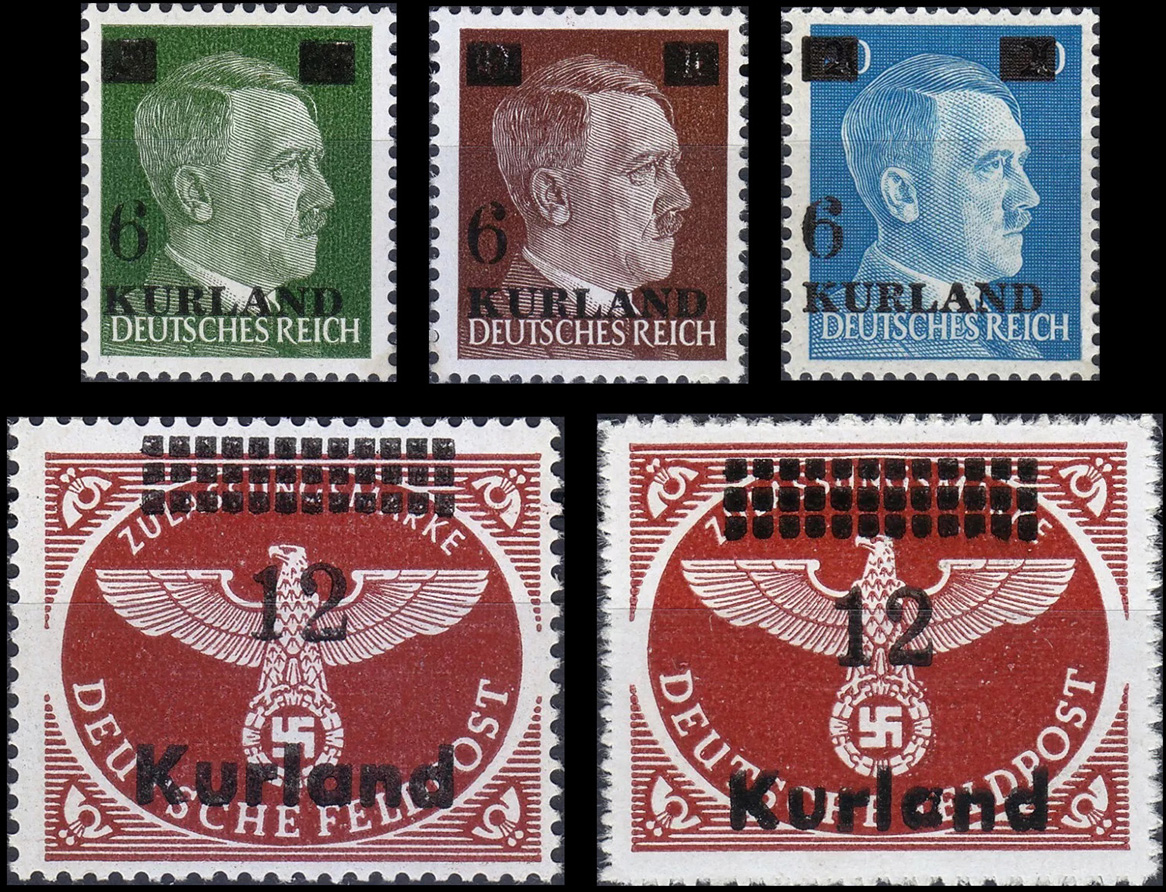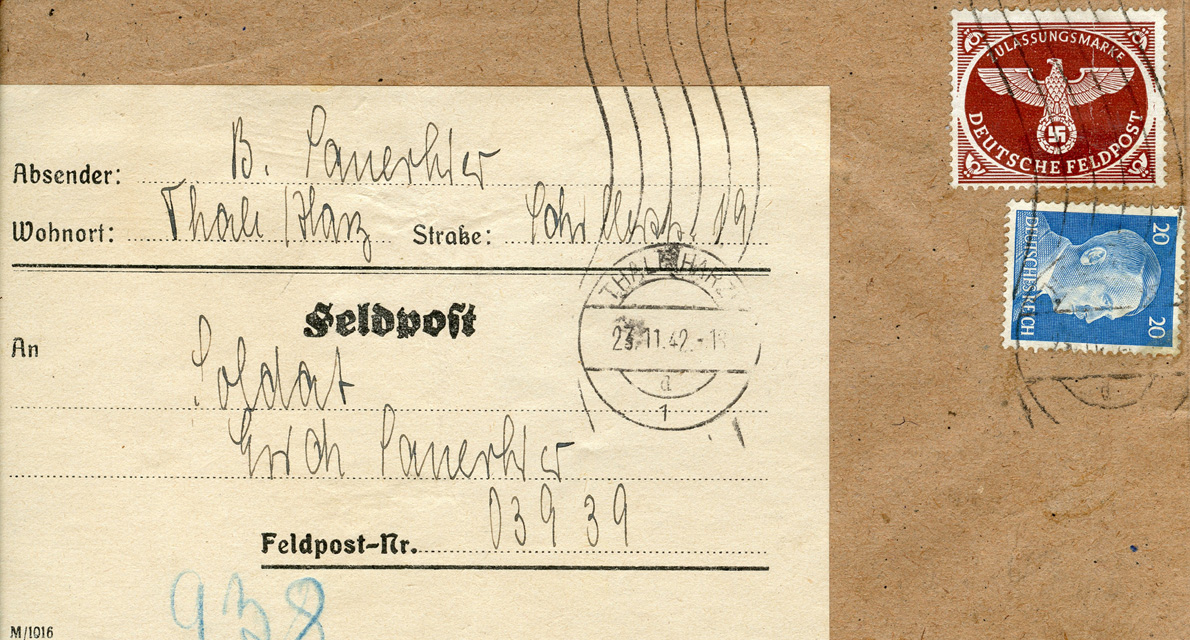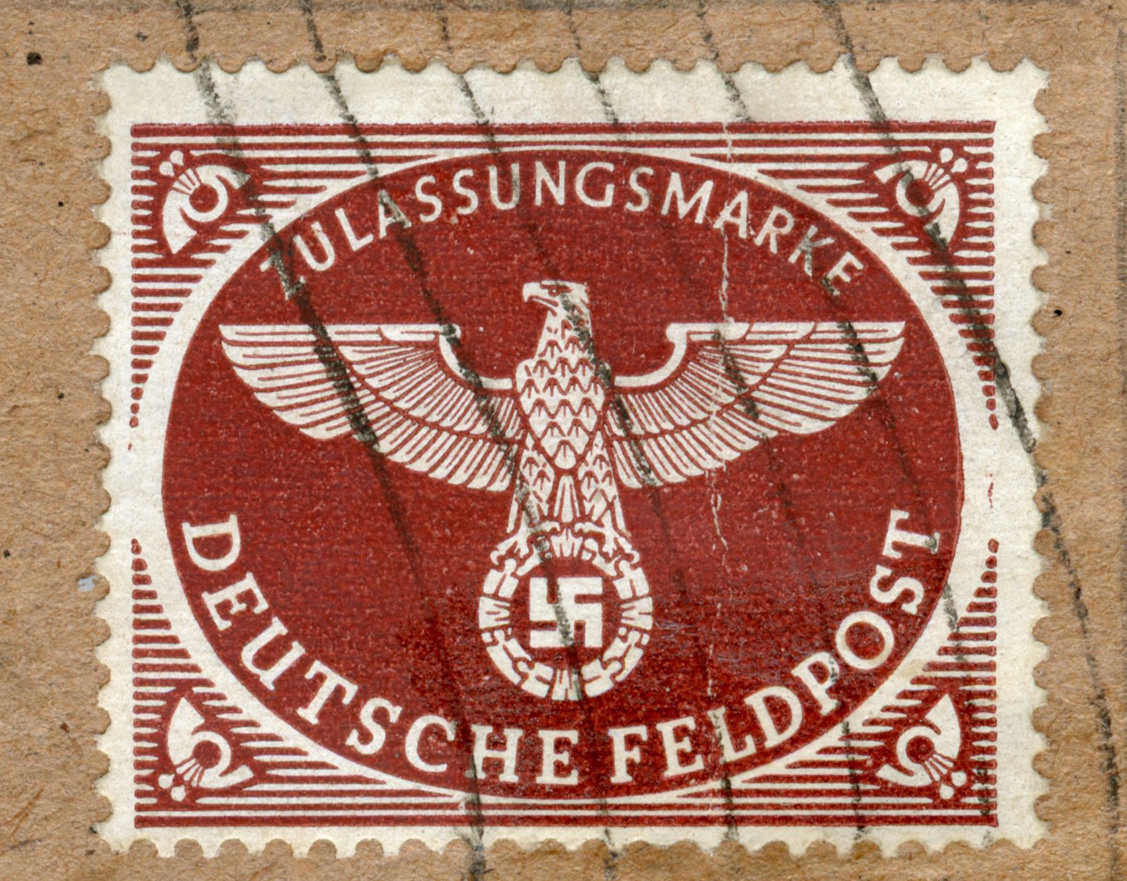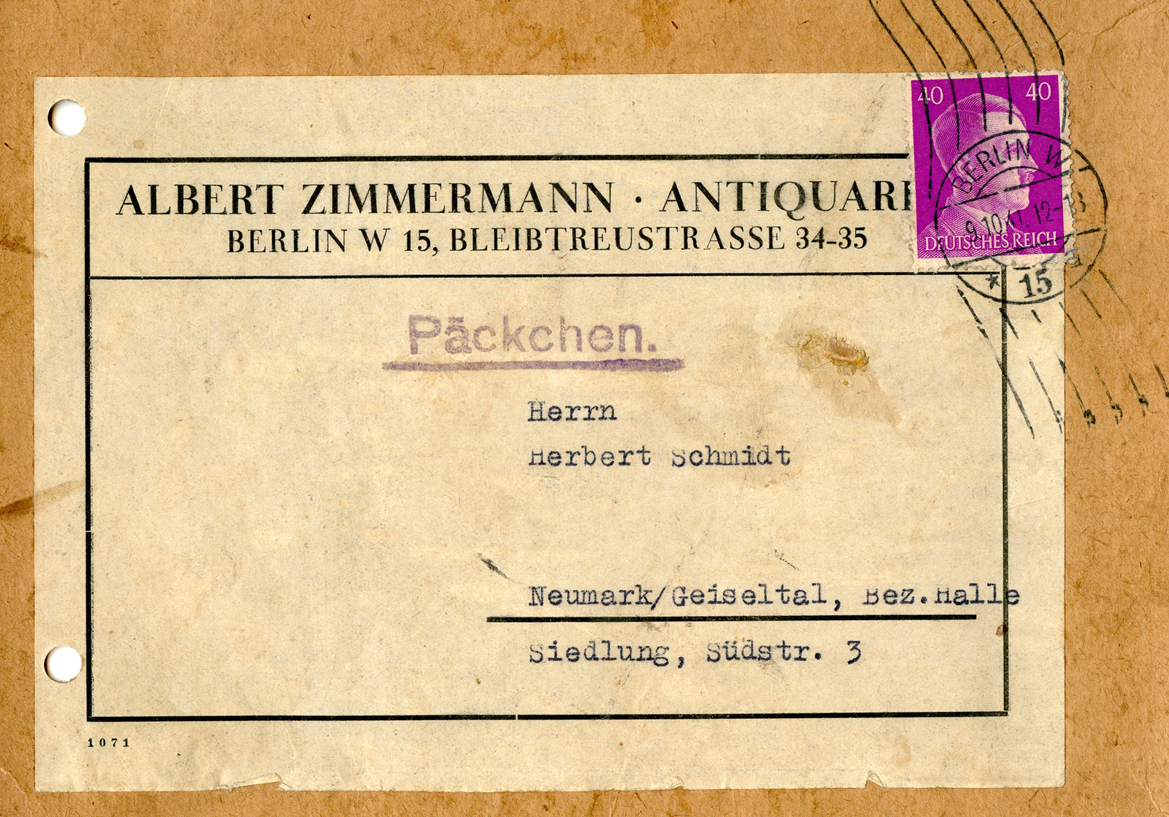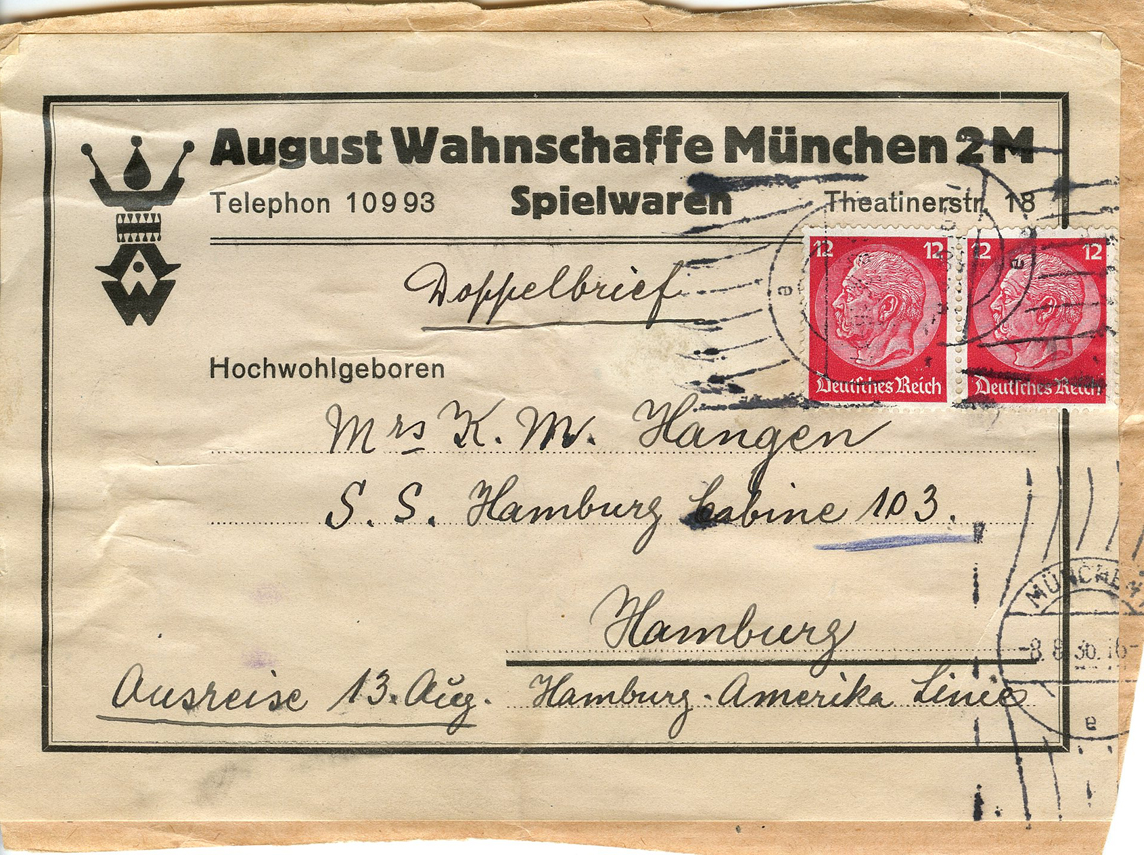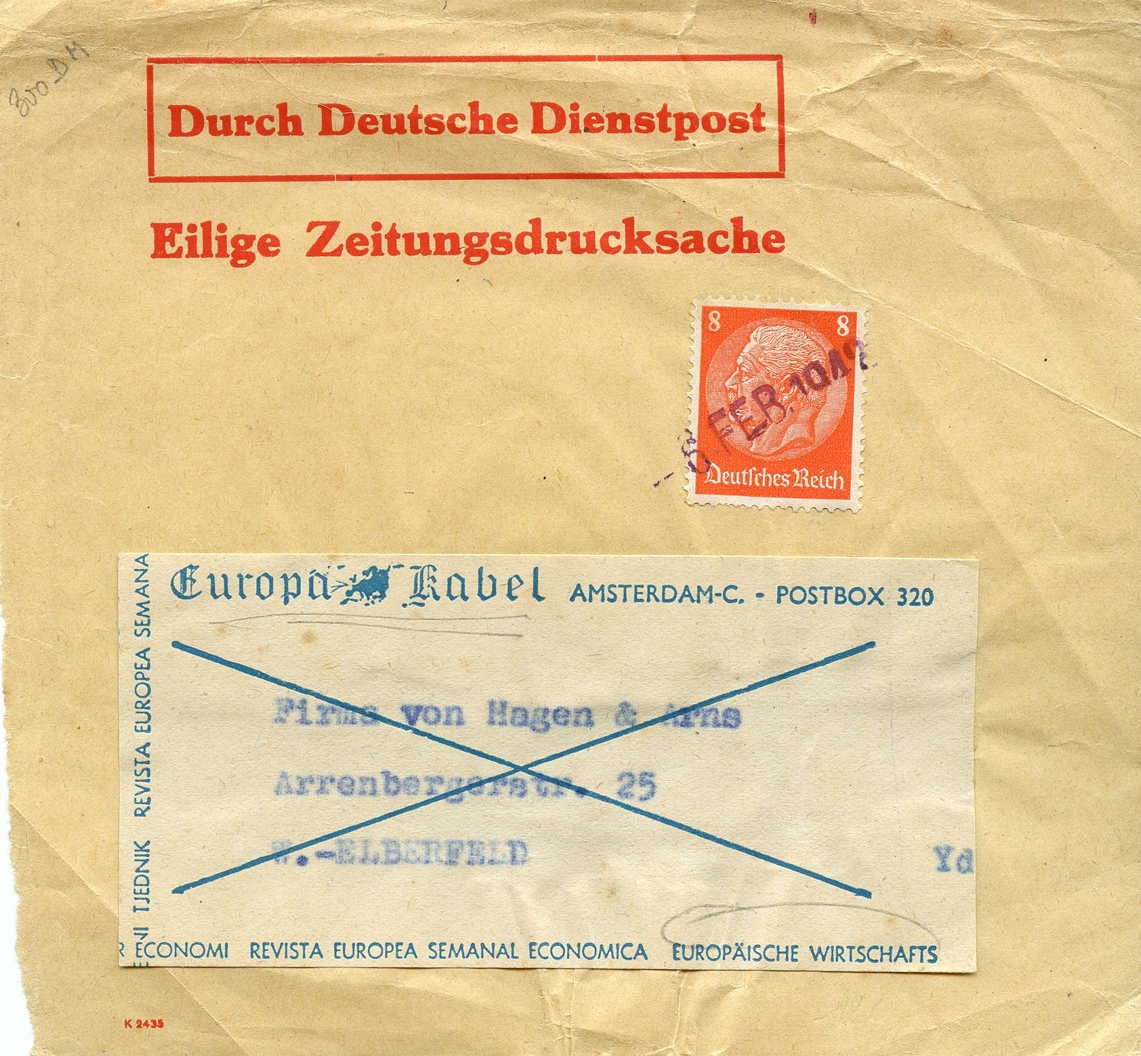
[Below: This is a fairly rare souvenir sheet released in 1935, rarer still is to find it used on an envelope. Many of these souvenir sheets are damaged today due to the use of acidic gum on the back. Speaking for the majority of these sheets, the only way they survived in good shape was if they had the gum on their reverse removed (by soaking in water). OSTROPA stands for 'Eastern Europe Stamp Exhibition'. The exhibition took place in Königsberg from June 23 - July 3, 1935. Click to enlarge.]
[Below: Close-up of souvenir sheet. Click to enlarge.]
[Below: Close-up of stamps. Click to enlarge.]
[Below: Reverse of envelope. Click to enlarge.]
[Below: Close-up of cancel. Click to enlarge.]

[Below: OSTROPA commemorative stamps. These privately produced stamps are fairly rare. This is not a complete set. Click to enlarge.]
[Below: OSTROPA commemoratives continued.]
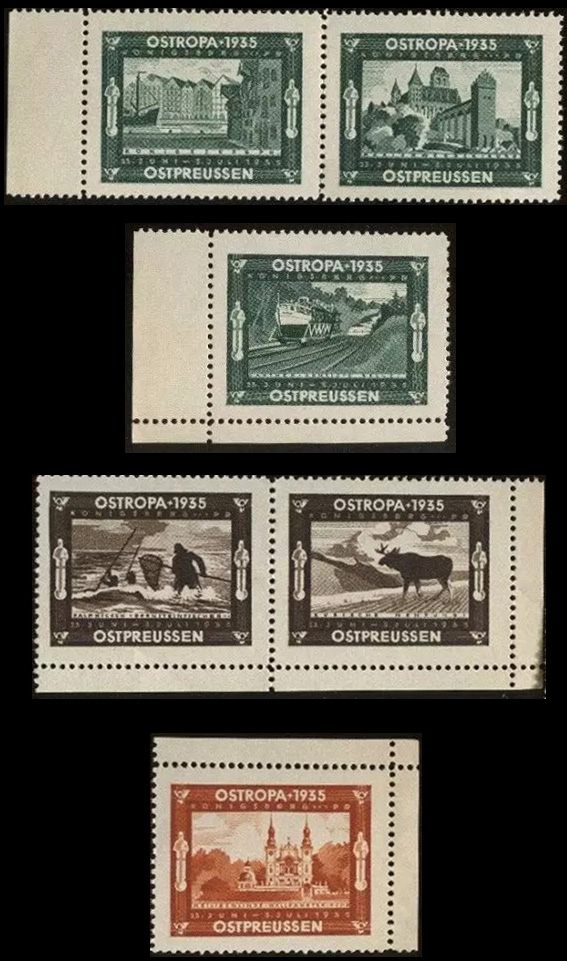

[Below: Here is another OSTROPA commemorative piece on a prepaid envelope. Click to enlarge.]
[Below: Close-up. Click to enlarge.]

[Below: This postcard says:
"Der wackre Schabe forcht' sich nit"
Landesverband Schwaben
des Reichsbundes der Philatelisten.'
("The brave Swabian is not afraid"
Swabian Regional Association
of the Reich Philatelists' Association)
Click to enlarge.]
[Below: Brown version. Click to enlarge.]
[Below: Close-up. Click to enlarge.]
[Below: Close-up of cancel from January 8-16, 1938. Click to enlarge.]

[Below: In keeping with the knight theme, here is a special cancel from May 8, 1943. It is from Marienburg and says:
'Burg Deutschen Ritter - 700 Jahre Ostgeschichte' (Teutonic Knights Castle - 700 Years of Eastern History). Click to enlarge.]
[Below: Close-up. Click to enlarge.]
[Below: A variation of the cancel above from May 19, 1940.]
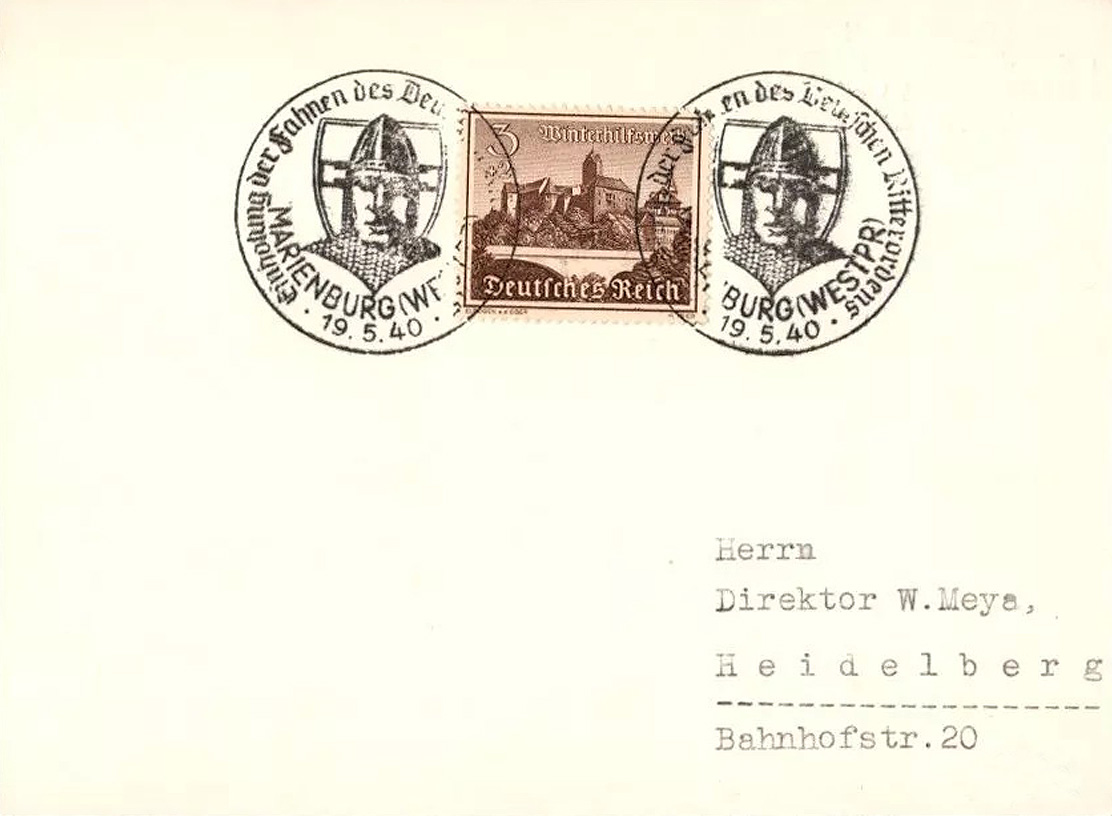
[Below: Here is another postcard with the odd postage stamp that goes with the cancel, also from May 19, 1940.]
[Below: Stamp and cancel close-up.]
[Below: Cancel close-up.]
[Below: Note the cancel, this was from October 12, 1941.]
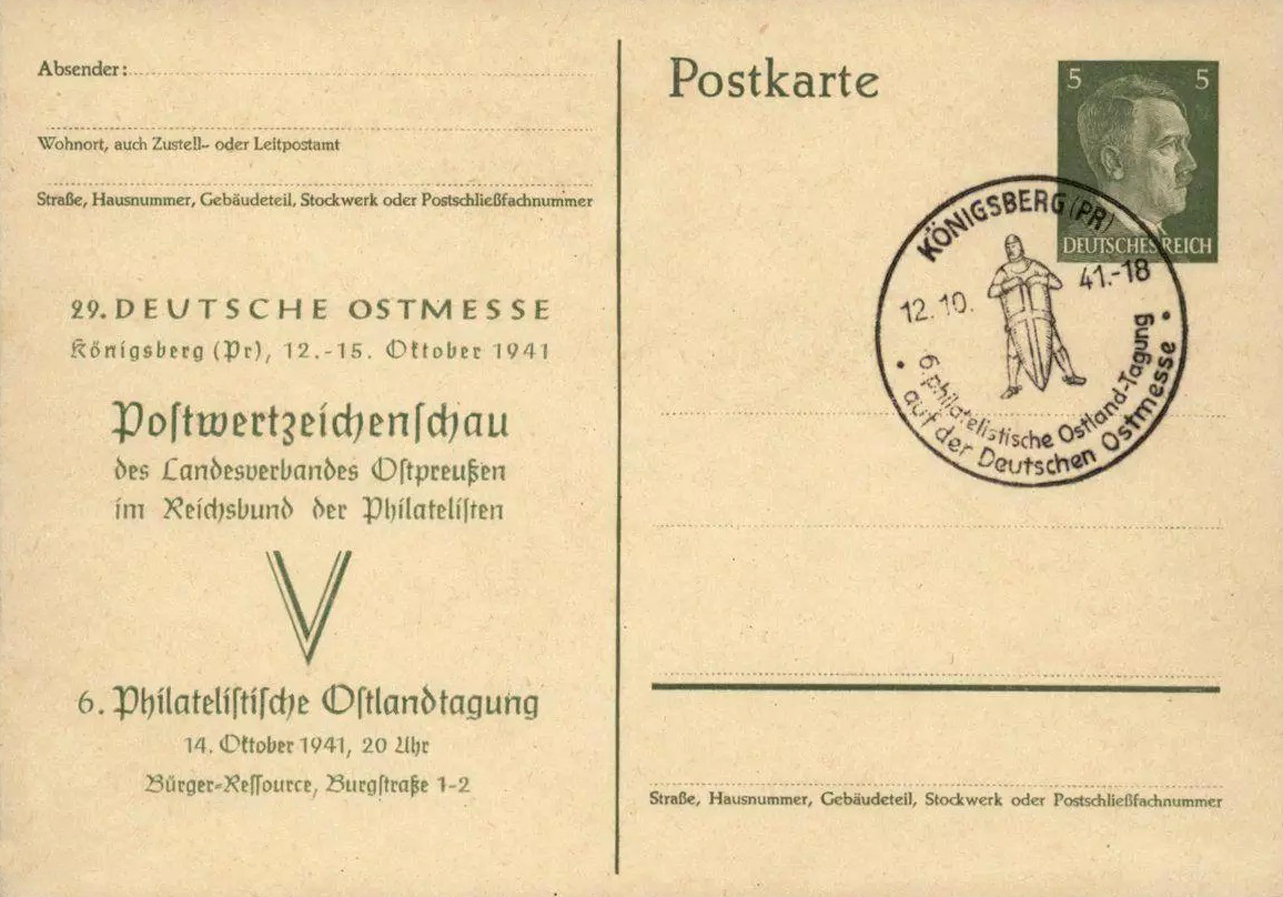
[Below: Close-up.]
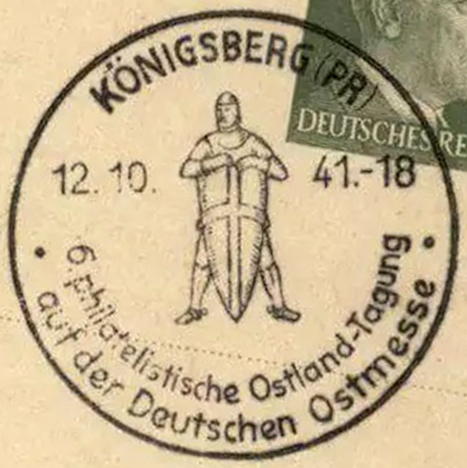
[Below: Keeping with the theme, on the left is a cancel of a warrior from the Kriegswinterhilfswerk (War Winter Relief) from October 25, 1941. On the right, here is another cancel from the same set, these are ancient swastikas. They were also made into small WHW pins, which you could get for a donation.]
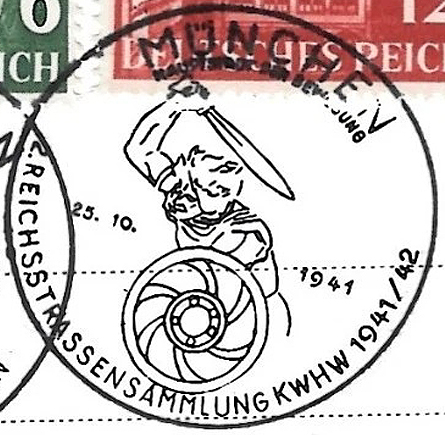
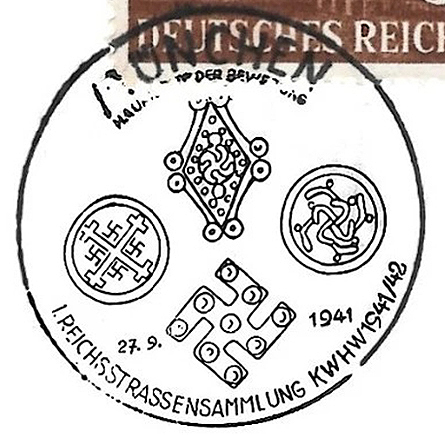
[Below: The above ink stamp is showing ancient Germanic relics of swastikas, which were reproduced by the WHW (Winterhilfswerk des Deutschen Volkes/Winter Relief of the German People) as donation badges. This is the complete set.]
[Below: On the topic, here are another group of WHW badges, showing variations. They are made of leather.]
[Below: Lastly, this is a WHW pin showing a four-leaf clover with runes.]
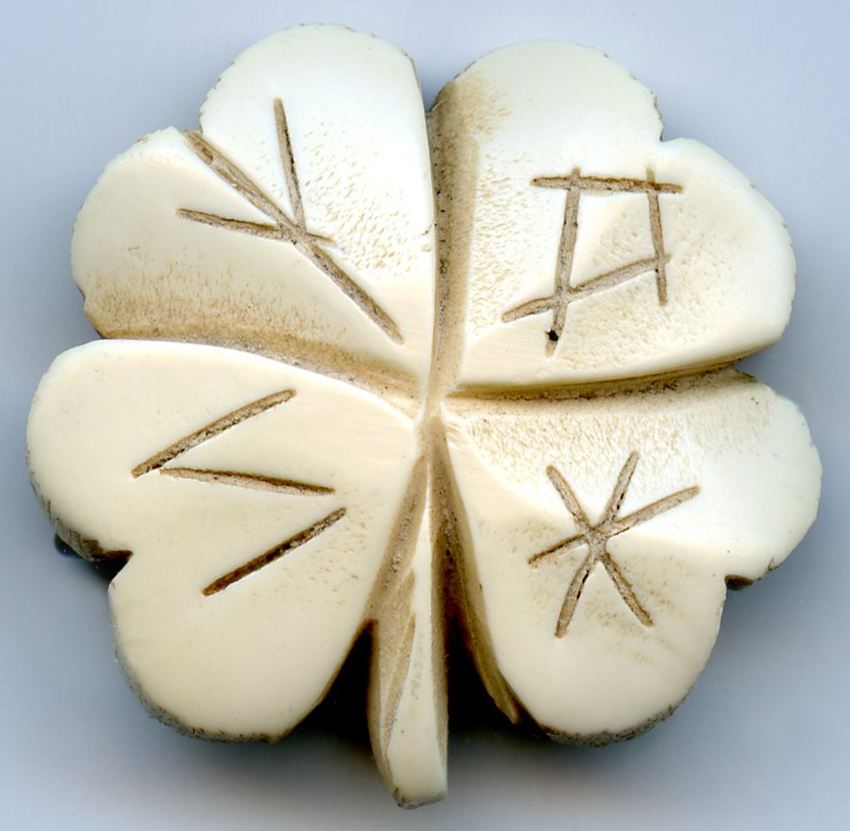
[Below: Here's an example of the cancel on a postcard. The postcard says:
'6 Jahre - 1935-1941 - Sammler-Gruppen - Alles für Deutschland!' (6 Years - 1935-1941 - Collector Groups - All for Germany!)]

[Below: New versions.]

[Below: Here is another souvenir sheet used on an envelope, except this is a common sheet (uncommon on envelope). It was released in 1936 to commemorate a horse race. Click to enlarge.]
[Below: Close-up of stamp. Click to enlarge.]
[Below: Close-up of additional stamp. Click to enlarge.]
[Below: Reverse of envelope. Click to enlarge.]

[Below: This next piece is interesting and probably pretty rare. Click to enlarge.]
[Below: Germany invaded Czechoslovakia on March 15, 1939, so this dates to right around there. 'Aktiebolaget' means 'The limited Liability Company'. Click to enlarge.]
[Below: Cancel close-up. Click to enlarge.]

[Below: This is a rather strange envelope sent from Danzig in the early 1930s. We can see it was meant to be sent to the USA, as it is pre-printed with the words U.S.A., but the strange part is it has a woman's name proffessionally printed on it. Did she pay for the envelope to be made before her cruise? Danzig had a major seaport, so it makes sense that her cruise would stop there. Click to enlarge.]
[Below: Close-up. Click to enlarge.]

[Below: This fancy envelope was sent from 'Der Bürgermeister der Stadt Mindelheim' (The Mayor of the City of Mindelheim). Mindelheim is a town in Swabia, Bavaria. It was sent to Memmingen, a town also in Swabia, Bavaria. It was addressed to 'Allgemeine Ortskrankenkasse' (General Local Health Insurance Fund). Click to enlarge.]

[Below: Here are some envelopes sent to Leipzig, which oddly have no postage stamps. This was common with government departments, but even they would say 'Free inside the Reich', so I'm not sure what is going on here. I think the pen in the lower left corner says 'Postsach', which means 'Postal matter'. All of them were sent in 1937 except for the last one sent in 1940. Click to enlarge.]
[Below: Close-up of cancel. Click to enlarge.]
[Below: Envelope #2. Click to enlarge.]
[Below: Close-up of cancel. Click to enlarge.]
[Below: Envelope #3. Click to enlarge.]
[Below: Close-up of cancel. Click to enlarge.]
[Below: Envelope #4. Click to enlarge.]
[Below: Close-up of cancel. Click to enlarge.]
[Below: This envelope has an odd inverted official seal. You can just make out the eagles wings... Click to enlarge.]
[Below: Envelope #5. This cancel says 'Buch und Schwert - Sinnbild Unserer Zeit - Grossdeutsches Dichtertreffen' (Book and Sword - Symbol of Our Time - Greater German Poets' Meeting). Click to enlarge.]
[Below: Close-up of cancel. Click to enlarge.]

[Below: Here is a rare piece of history. In mid March until April 1945 the 1944 Feldpost parcel stamp was cut in half for use as an airmail stamp by the troops isolated in Kurland. This was done because of a shortage of stamps. These stamps were glued to Feldpost cards and covers and precancelled to discourage misuse. Click to enlarge.]
[Below: Close-up.]
[Below: Reverse of envelope. Note the tiny ink stamp 'Pickenpack' in the lower left hand corner. This is a famous German expertizer, whose mark authenticates this as being genuine.]

[Below: Here is another Kurland envelope, this time for civilian and military use (brown package stamps) and issued on April 20, 1945, this was sent two days later. Click to enlarge.]
[Below: Close-up.]
[Below: Reverse of envelope.]
[Below: Full set of Kurland stamps.]

[Below: Here is an interesting and rather hard to find piece of a package sent to a soldier. As you can imagine people didn't save these, they are not like envelopes with letters that may be sentimental or contain information. It was sent on November 23, 1942. Click to enlarge.]
[Below: Close-up.]
[Below: Here is another package front, except this one is civilian. This was postmarked on October 9, 1941 in Berlin.]
[Below: Another package front, except this one was sent to the 'S.S. Hamburg Cabine 103' of the 'Hamburg Amerika Linies', a large luxury cruise ship. This was postmarked on August 8, 1936 in Munich.]
[Below: Another package front, postmarked on February 6, 1942. It says: 'Durch Deutsche Dienstpost - Eilige Zeitungsdrucksache' (By German official mail - Urgent newspaper print matter).]
